You are using an out of date browser. It may not display this or other websites correctly.
You should upgrade or use an alternative browser.
You should upgrade or use an alternative browser.
African Genealogy & Biblical History (Dana W. Marniche) (Homework Thread)**Read only, no posting**
- Thread starter Bed$tuy🇭🇹
- Start date
More options
Who Replied?Bed$tuy🇭🇹
Basic Instructions Before Leaving Earth 🇭🇹
Dana W. Marnich

 chicago.academia.edu
chicago.academia.edu
Former publisher "Global Black Woman Magazine"; affiliated with FBN Africa. Former college instructor in World Civilizations, sociology and cultural anthropology; researcher for museums, educational institutions, book authors, Research Associate for book - The Way of the Earth - (a Pulitzer Prize nominee, 1994), by T.C. McLuhan. Former assistant editor, and web-site manager for the on-line, peer-reviewed, "International Journal of Multicultural Education". Have previously written for the "Journal of African Civilizations", and "West Africa Review". Graduate degrees include an MA in Education and an MA in Social Sciences (Univ. of Chicago) specializing in anthropology, plus a year at Columbia Univ. (SIPA) in NYC. I prefer a straightforward approach - after all, as one Sufi master has said - "truth is the only lasting joy".
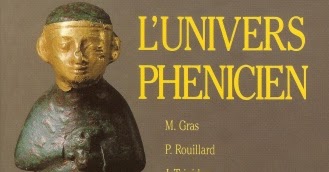
 afroasiatics.blogspot.com
afroasiatics.blogspot.com

 afroasiatics.blogspot.com
afroasiatics.blogspot.com
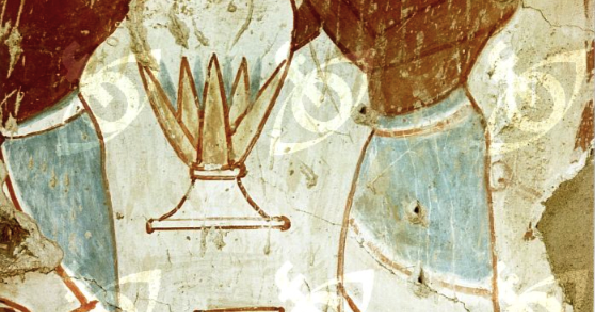
 afroasiatics.blogspot.com
afroasiatics.blogspot.com

“It will be remembered that in the preceding book, on Phoenicia, we proved from the Phoenician traditions collected by the writers of classical antiquity, that the primitive country of the Cannaanitish tribes was in this part of Arabia, which they left about 2000 B.C., for Syria.” Francois Lenormant, 1871, Medes and Persians, Phoenicians and Arabians, p. 286.
“Abraham after this married Keturah with whom 6 sons were born to him…. Now the sons of Sous were Sabathan and Dedan. The sons of Dedan were Latusim, and Asur, and Lehum. The sons of Madian were, Ephas, and Aphran, and Anoch, and Abidas, and Eldas. Now for all these sons and grandsons Abraham contrived to settle them in colonies; and they took possession of Troglodytes, and the country of Arabia the Happy, as far as it reaches to the Red Sea. It is related of this Aphran that he made war against Libya, and took it, and that his grandchildren, when they inhabited it, called it from his name Africa.” (Antiquities of the Jews by Josephus, from the chapter entitled - “How the Nation of the Troglodytes were Derived from Abraham by Keturah”


Dana Marniche | University of Chicago - Academia.edu
Academia.edu is the platform to share, find, and explore 50 Million research papers. Join us to accelerate your research needs & academic interests.
Former publisher "Global Black Woman Magazine"; affiliated with FBN Africa. Former college instructor in World Civilizations, sociology and cultural anthropology; researcher for museums, educational institutions, book authors, Research Associate for book - The Way of the Earth - (a Pulitzer Prize nominee, 1994), by T.C. McLuhan. Former assistant editor, and web-site manager for the on-line, peer-reviewed, "International Journal of Multicultural Education". Have previously written for the "Journal of African Civilizations", and "West Africa Review". Graduate degrees include an MA in Education and an MA in Social Sciences (Univ. of Chicago) specializing in anthropology, plus a year at Columbia Univ. (SIPA) in NYC. I prefer a straightforward approach - after all, as one Sufi master has said - "truth is the only lasting joy".

CANAANITES IN THEIR LANDS PART 1 Afro-Arabian Origins of the Hebrews, Phoenicians and Berbers
Understanding Ancient Commentary on the Settlement of the Peoples of Abraham, i.e. Canaanite Hebrews or “Berbers” in Africa by D....

CANAANITES IN THEIR LANDS Part 2 Afro-Asiatic Israel and Aram
CANAANITES IN THEIR LANDS Part II Afro-Asiatic Israel and Aram by Dana W. Reynolds A young man walks in Saudi Arabia's R...

CANAANITES IN THEIR LANDS - Part 3 Edomites, Hebrews and Israelites in ancient and modern Afro-Arabia
EDOMITES, HEBREWS AND ISRAELITES i.e. The Ancient Azd and Himyarites of the Asir Tehama By D. W. Reynolds “To Aram b. Shem w...
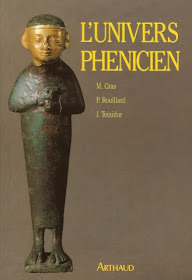
“It will be remembered that in the preceding book, on Phoenicia, we proved from the Phoenician traditions collected by the writers of classical antiquity, that the primitive country of the Cannaanitish tribes was in this part of Arabia, which they left about 2000 B.C., for Syria.” Francois Lenormant, 1871, Medes and Persians, Phoenicians and Arabians, p. 286.
“Abraham after this married Keturah with whom 6 sons were born to him…. Now the sons of Sous were Sabathan and Dedan. The sons of Dedan were Latusim, and Asur, and Lehum. The sons of Madian were, Ephas, and Aphran, and Anoch, and Abidas, and Eldas. Now for all these sons and grandsons Abraham contrived to settle them in colonies; and they took possession of Troglodytes, and the country of Arabia the Happy, as far as it reaches to the Red Sea. It is related of this Aphran that he made war against Libya, and took it, and that his grandchildren, when they inhabited it, called it from his name Africa.” (Antiquities of the Jews by Josephus, from the chapter entitled - “How the Nation of the Troglodytes were Derived from Abraham by Keturah”

Last edited:
Bed$tuy🇭🇹
Basic Instructions Before Leaving Earth 🇭🇹
Canaanite Hebrews or “Berbers” in Africa
Esoteric tradition holds that the first five books of the Bible or Pentateuch are historical but steeped in allegory that is astronomically and metaphysically-related explaining the emergence of many of the elements of civilization, including agriculture, navigation, and metallurgy on one level, and on another, the evolution of the individual soul from animal to spiritual man. In order to understand the deep significance of these stories it is useful to understand the origins of the people who were mentioned in these books.
Kamal Salibi suggested in his highly controversial The Bible Came from Arabia that not only were most of the village names and places noted in the Bible located west and Southwest Arabia, but he asserts at the very beginning of the book of Genesis the word Tehama or "Tehom" a name for a region of Arabia translated as "the deep" is mentioned.

Black husbandmen or "peoples of Shem" entered Egypt, the fertile crescent, Syria and the Aegean ages ago from Arabia after various inundations and cataclysms in their own homelands.
Arabia was considered Ethiopia by the Greeks. From the historical records we know ancient Arabians who moved north into Syria bore tribal names similar to the ones they possess today such as Solymi/Soleymi, Mushki /Mashikh (Meshech), Melukha/Amlek, Sabaai, Masa'ai/Masha'i (Massa), Chalybi/Kuleyb, Hudayd (Hittites), Duma'at/Thamudi (Dumah), Kashtu/Khasid (Khasdim), Hori/Hur, Philistiu, Cana'ani/Kinahniyya, Qos/Qays, Mushri/Musruh (Misra), Rabbeans/Rabi'a, Hapiru/Afyriyya and Ammuru/Amurrat - the Greeks and Egyptians later called many of them "Phoenicians", Keftiu and Danaans/Adanan after certain peoples from near the region of Aden and the Eritrean Sea. Most were named after their Gods and named their towns and villages after their Arabian homelands in the places they settled to the north, east and west.
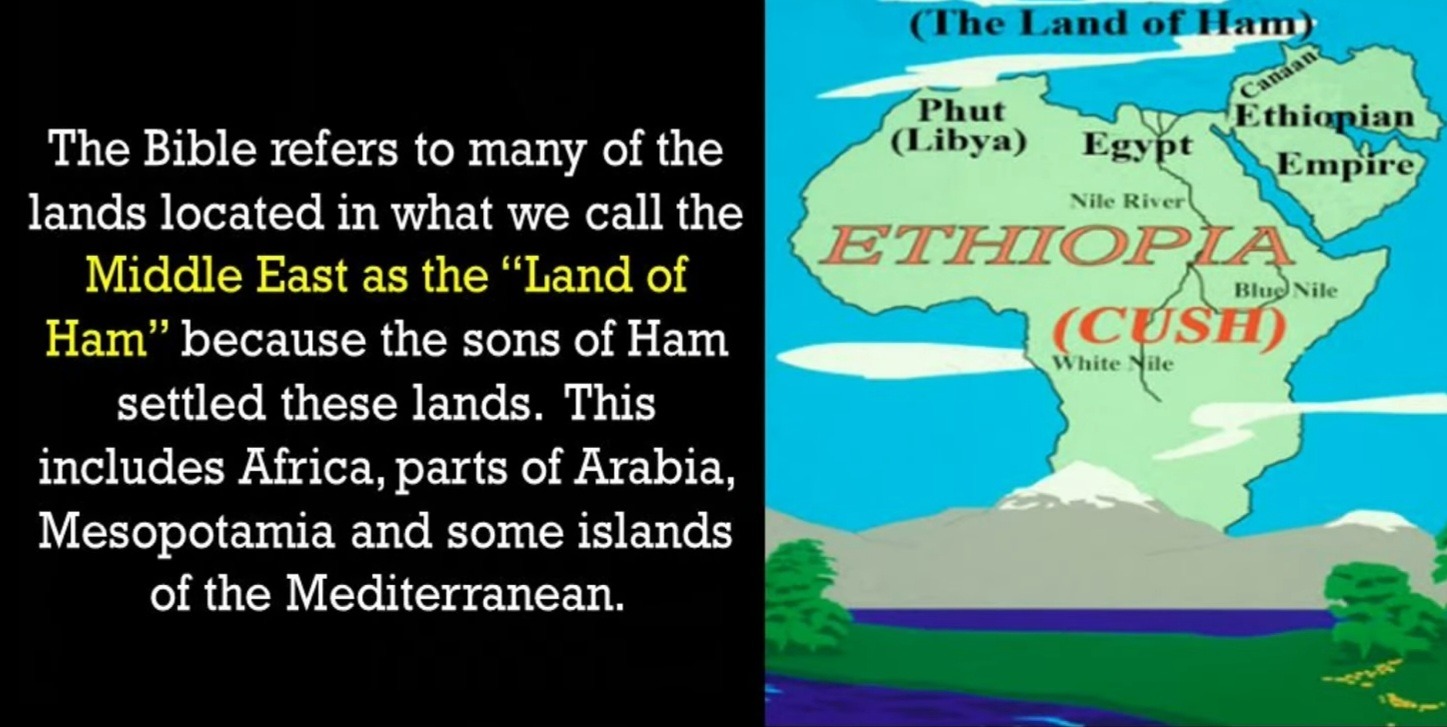
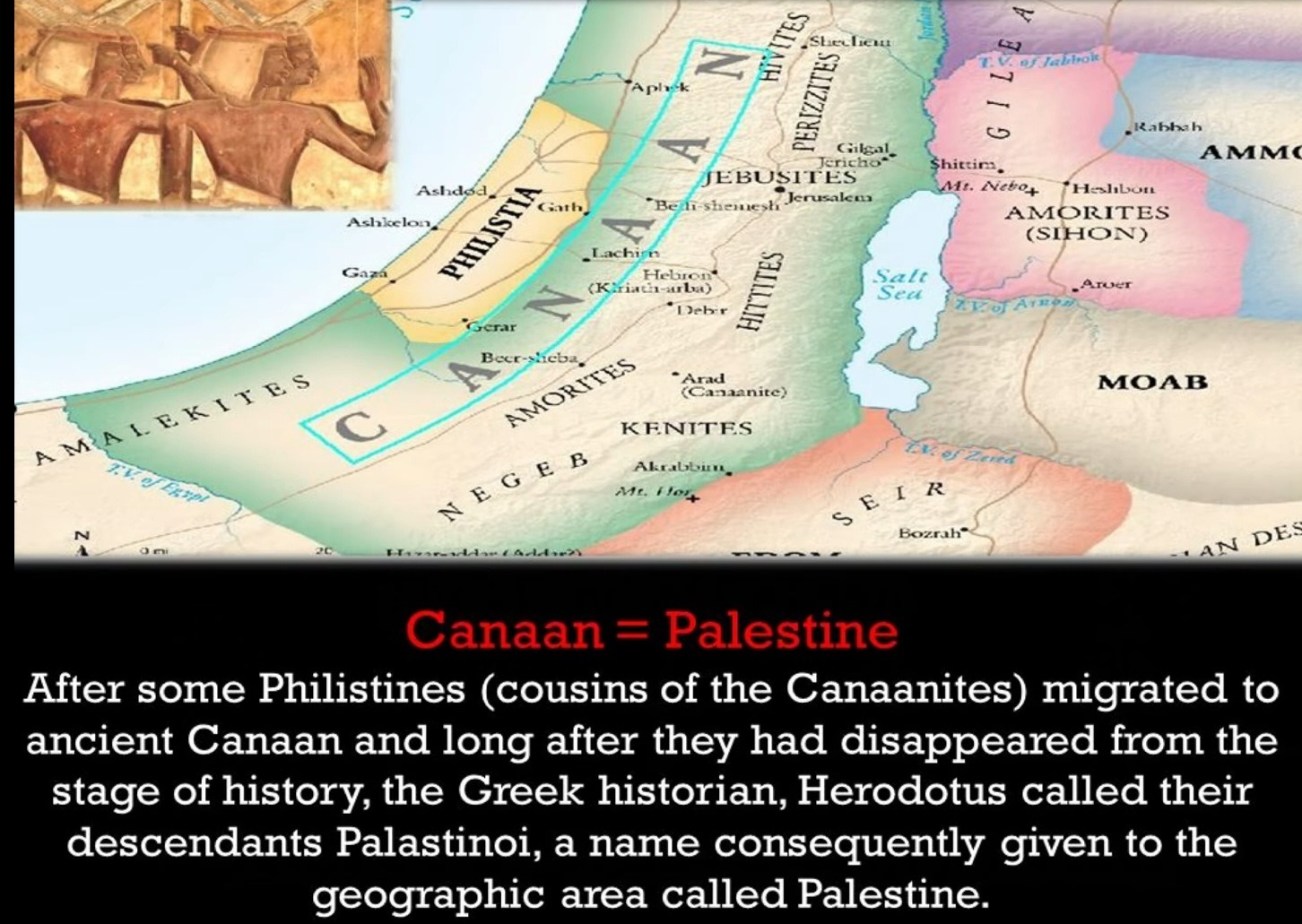

Within the last 500 years Arabized people largely of Syrian, Turkish and other foreign biological origin have intermixed with the original Arabs both within the peninsula and elsewhere and these mixed descendants now occupy a large swathe of the Arabian peninsula from north to south.
Nevertheless, before that period, and in pre-Islamic times, the Arabian region had rested relatively undisturbed by foreign intrusion and settlement (except for some settlement of Partho-Scythian merchants in the south around the coasts).
Well into medieval times the peninsula was still considered part of "Sudan" or else "India", and the people living there are mentioned by the important Arabic-speaking authors, including Syrian, Chinese, North African and Andalusian-descended Muslims as African in appearance. Al-Dhahabi of Syria wrote in his Siyar al Nubalaa' that the Hijaz was noticeably lacking in people who were fair-skinned and that individuals who were fair were thought to be of partial slave descent from Syrians, Byzantium or Persia. Ibn Mandour- a North African of the 14th century and others also claimed most Arabs were dark brownish-black and kinky haired and tended to look down on fair-skin and straight or lank hair, as it was then seen as characteristic of "slaves" (Ibn Mandour, Lisaan al Arab IV:209).
In this same era Ibn Khaldun mentions Arabia as one of his zones of Bilad as Sudani in his book, "Muqaddimah". He wrote "The first and second zones are excessively hot and black, and the sixth and seventh zones are cold and white. The inhabitants of the first and second zones in the south are called the Abyssinians, Zanj and the Sudanese.
The Discovery of Africa | Race and Slavery in the Middle EastAn Historical Enquiry
These are synonyms used to designate a particular nation that has turned black" (Muqaddimah: An Introduction to History, Vol. 2, 1967, p. 171, Princeton University Press). Khaldun actually puts the Hadramaut and Yemen in in his 'first zone". While Western India, Ghana, the Tuareg Berber tribes and Central Arabia (Nejd) and the Hijaz were located according to him in the "second zone".
This posting discusses the apparent historical foundations of the folklore of the Bible and Quran, and demonstrates that the Genesis book concerns the chieftains of "Tehom" or Tehama, part of which was also known as “Kush”- in the Asir region, and the peoples of "Israel", "Edom" and "Canaan". It explains the basis of the folkloric history of the clans who carried their Afro-Arabian story of the "children of Noah" or "Noah al-Djurhumi" - called so because of his derivation from the tribe of Djurhum or Hadharme (biblical Hadoram) - throughout the peninsula and outside of the the Arabian region within a period of a couple of thousand years prior to the Christian or Islamic eras.
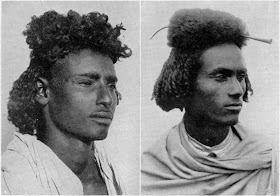
The Beja are divided into clans including the Hadharme (Djurhum) or Hadareb, Habab and Hadandawa all of whom tend to resemble each other. They have occupied since ancient times both sides of the Red Sea.
Last edited:
Bed$tuy🇭🇹
Basic Instructions Before Leaving Earth 🇭🇹
Understanding Josephus References to Midianites in Africa
Our exploration starts with Josephus who following the Hebrew writings tells us that in his time the descendants of Keturah or Qeturah coming from southern Arabia had settled the area of the “troglodytes” in the Horn of Africa, which in Josephus' era was also considered part of "Arabia".
John Murray states the following.
“Josephus ('A.J.' i. 15) tells us that the descendants of Keturah occupied the Troglodyte country and Arabia Felix, which statement is repeated by Jerome ('Qu. Heb. in Gen.').” The Holy Bible according to the authorized version (A.D.1611) published 1872.
What Josephus, Jerome and others documented were numerous “Hebrew” clans in sub-Saharan Africa found under the eponyms reminiscent of both children of Hagar and Keturah of the Hebrew Bible. Apparently in Jewish esoteric tradition the names of Hagar and Keturah were synonymous, so to speak, so it should not surprise that we find the names of Hagar’s children are present as well among the early trogodytes. In the Bible the names of the children of both tribal ancestresses were in fact interchangeable, as seen in the story of Joseph son of Jacob, where the Ishmaelites - children of Hagar - are called synonomously "Midianites" from Keturah.
A passage of Genesis 37:8 reads - "so when the Midianite merchants came by, his brothers pulled Joseph up out of the well and sold him for twenty shekels of silver to the Ishmaelites, who took him to Egypt."
The occupants of the "Ethiopian" trogodyte region which refers to a region of the Horn of Africa and Sahara are still called by such names as Anfar or Afar in Africa or Afariyya, Maddhij and Madad on the other side of the Erythraean Sea in Arabia. In the Roman period in one region of the trogodytes of the Sahara and Northern Africa, a people called Pharusii are mentioned as the nomadic and half-naked. They possessed horses and chariots. Strabo asserted that a portion of them dwelt in grottoes or underground houses they built for themselves. These Pharusii, he writes, “appear to have partly lived to the west and partly to the south-east of the High Atlas. With their caravans they occasionally reached as far as Cirta.”(Cirta meaining the Syrtic or Sidra region of Libya).
According to the on-line Brill reference book their name in ancient sources is variously Persae, Perusii; Ptol. 4,6,17; Geogr. Rav. 43,10: Paurisi. Pliny places them next to the pastoral Nigritae or Nigritians, a people named for the Niger river (from which comes the people named Niger, Nigra or Negro).
It has been noted by several scholars of North Africa that these ancient Pharusii or Persae were ancestral to the later and modern Tuareg clans who were and still are called by the ethnonym Kel Iforas, (also Ifouran, Ifouren, and Ifouracen). And it has also been rightly stated that the name of the “Iforaces” mentioned by Corippus in the 6th century is recognizable in their modern designation. Explorer Heinrich Barth speaks of them in the colonial era as the Fares or Kel-Fares whom are mentioned with the Kel n-Neggaru (ancient Nigritae?) (Barth, 1857, p. 283). While apparently the pronunciation among the Tuareg was Afar’is according to Gaston Cauvet’s 1933 article “Les Touareg Iforas”.* ( The Tuareg clan of Iforas were a client tribe of the Hoggar Tuareg in Cauvet’s time.)

Young men of the Kel Adagh or Adar clan of the Iforas Tuareg
Our exploration starts with Josephus who following the Hebrew writings tells us that in his time the descendants of Keturah or Qeturah coming from southern Arabia had settled the area of the “troglodytes” in the Horn of Africa, which in Josephus' era was also considered part of "Arabia".
John Murray states the following.
“Josephus ('A.J.' i. 15) tells us that the descendants of Keturah occupied the Troglodyte country and Arabia Felix, which statement is repeated by Jerome ('Qu. Heb. in Gen.').” The Holy Bible according to the authorized version (A.D.1611) published 1872.
What Josephus, Jerome and others documented were numerous “Hebrew” clans in sub-Saharan Africa found under the eponyms reminiscent of both children of Hagar and Keturah of the Hebrew Bible. Apparently in Jewish esoteric tradition the names of Hagar and Keturah were synonymous, so to speak, so it should not surprise that we find the names of Hagar’s children are present as well among the early trogodytes. In the Bible the names of the children of both tribal ancestresses were in fact interchangeable, as seen in the story of Joseph son of Jacob, where the Ishmaelites - children of Hagar - are called synonomously "Midianites" from Keturah.
A passage of Genesis 37:8 reads - "so when the Midianite merchants came by, his brothers pulled Joseph up out of the well and sold him for twenty shekels of silver to the Ishmaelites, who took him to Egypt."
The occupants of the "Ethiopian" trogodyte region which refers to a region of the Horn of Africa and Sahara are still called by such names as Anfar or Afar in Africa or Afariyya, Maddhij and Madad on the other side of the Erythraean Sea in Arabia. In the Roman period in one region of the trogodytes of the Sahara and Northern Africa, a people called Pharusii are mentioned as the nomadic and half-naked. They possessed horses and chariots. Strabo asserted that a portion of them dwelt in grottoes or underground houses they built for themselves. These Pharusii, he writes, “appear to have partly lived to the west and partly to the south-east of the High Atlas. With their caravans they occasionally reached as far as Cirta.”(Cirta meaining the Syrtic or Sidra region of Libya).
According to the on-line Brill reference book their name in ancient sources is variously Persae, Perusii; Ptol. 4,6,17; Geogr. Rav. 43,10: Paurisi. Pliny places them next to the pastoral Nigritae or Nigritians, a people named for the Niger river (from which comes the people named Niger, Nigra or Negro).
It has been noted by several scholars of North Africa that these ancient Pharusii or Persae were ancestral to the later and modern Tuareg clans who were and still are called by the ethnonym Kel Iforas, (also Ifouran, Ifouren, and Ifouracen). And it has also been rightly stated that the name of the “Iforaces” mentioned by Corippus in the 6th century is recognizable in their modern designation. Explorer Heinrich Barth speaks of them in the colonial era as the Fares or Kel-Fares whom are mentioned with the Kel n-Neggaru (ancient Nigritae?) (Barth, 1857, p. 283). While apparently the pronunciation among the Tuareg was Afar’is according to Gaston Cauvet’s 1933 article “Les Touareg Iforas”.* ( The Tuareg clan of Iforas were a client tribe of the Hoggar Tuareg in Cauvet’s time.)
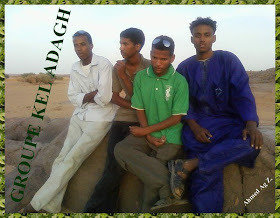
Young men of the Kel Adagh or Adar clan of the Iforas Tuareg
Last edited:
Bed$tuy🇭🇹
Basic Instructions Before Leaving Earth 🇭🇹
There would thus seem also to be a connection between the names of these tribes of Ifouran or Iforas and those peoples named Aphran or Aphras that an ancient Jewish Roman named Josephus claimed had colonized Africa from Arabia. He wrote, “Now it is said that this Aphren made an expedition to Libya and subdued it and his grandsons having settled there called the land Africa after his name … ‘But Cleodemus the prophet, who is also called Malchus, in narrating the history of the Jews even as Moses their Lawgiver has narrated it , says that by Chettura Abraham had many sons: and he also mentions their names, calling three of them Afer, Assur, and Afran.” (Libya of course was the ancient name mainly for northern Africa in general.)
According to Pliny, Pomponius Mela, and Salluste, they had come “with Hercules” or Herakles from the East. The roots of this story are founded on the fact that a large part of the Horn of Africa as well as most of southern Arabia was considered a major part of "India". Josephus in fact spoke similarly about a connection between the peoples of Afra or Aphran and Hercules in chapter 15 of his Antiquities entitled, “Of the Nation of the Troglodytes, Who were Derived from Abraham and Keturah”.
He wrote in that chapter - "Cleodomus the prophet... who wrote a history of the Jews in agreement with the history of Moses their legislator relates, there were many sons born to Abraham and Keturah who he names Apher and Surim and Japhran. From Surim was the land of Assyria denominated and that from the other two Apher and Japhran, the country of Africa took its name, because these men were auxiliaries to Hercules when he fought against Libya and Antaeus. And that Hercules married Aphra's daughter, and of her he begat a son Didorus..."
The Antaeus mentioned in the above paragraph was a famous ancestor hero of the ancient northern Africans. Max Mueller had noted, “The latter expression (Antyw Khentiu) is archaic”, and he also spoke of “the wandering Hamitic Trogodyte tribes of the ‘Arabian’ desert, whose name Enti, Anti, has been preserved by classical writers …” (Mueller, 1904, p. 138) (“Arabian desert” meaning the eastern deserts of Egypt and Sudan in the ancient and modern world).
The genealogies of the Tuareg and Shluh Berbers are also filled with king-rulers or ancestors named Herik and Herak. Traditional genealogy of the Tuareg lists one of their earliest ancestors as “Mazigh son of Herak, son of Herik, son of Bedian, son of Canaan”(MacMichael, 1922, p. 202).
He became the legendary hero "Herakles" or Hercules of Greek mythology. Herakles of the Moors is sometimes called “the Indian Herakles” by the early writers due to the Moors who were considered to have connection to the occupants of southern Arabia. (Southern Arabia was known as “India Minor” in the ancient world.)
Unlike the book of Genesis which makes Midian the father of Afran (of Afar), Asur, Yudadas, etc., Josephus makes his biblical brother Madan their ancestor. These references to tribes of Midian, Madan, Assur, Afer, and Sophae also represent the names of ancient Berber nomads of Nubia, Sahel and Sahara and of coastal East and North Africa. They had once been settled in "Arabia" an ancient name for both sides of the Red Sea, and are now represented by various clans of Tuareg, Beja and Afar (also called Danakil) and other Africans of the Horn.
According to Pliny, Pomponius Mela, and Salluste, they had come “with Hercules” or Herakles from the East. The roots of this story are founded on the fact that a large part of the Horn of Africa as well as most of southern Arabia was considered a major part of "India". Josephus in fact spoke similarly about a connection between the peoples of Afra or Aphran and Hercules in chapter 15 of his Antiquities entitled, “Of the Nation of the Troglodytes, Who were Derived from Abraham and Keturah”.
He wrote in that chapter - "Cleodomus the prophet... who wrote a history of the Jews in agreement with the history of Moses their legislator relates, there were many sons born to Abraham and Keturah who he names Apher and Surim and Japhran. From Surim was the land of Assyria denominated and that from the other two Apher and Japhran, the country of Africa took its name, because these men were auxiliaries to Hercules when he fought against Libya and Antaeus. And that Hercules married Aphra's daughter, and of her he begat a son Didorus..."
The Antaeus mentioned in the above paragraph was a famous ancestor hero of the ancient northern Africans. Max Mueller had noted, “The latter expression (Antyw Khentiu) is archaic”, and he also spoke of “the wandering Hamitic Trogodyte tribes of the ‘Arabian’ desert, whose name Enti, Anti, has been preserved by classical writers …” (Mueller, 1904, p. 138) (“Arabian desert” meaning the eastern deserts of Egypt and Sudan in the ancient and modern world).
The genealogies of the Tuareg and Shluh Berbers are also filled with king-rulers or ancestors named Herik and Herak. Traditional genealogy of the Tuareg lists one of their earliest ancestors as “Mazigh son of Herak, son of Herik, son of Bedian, son of Canaan”(MacMichael, 1922, p. 202).
He became the legendary hero "Herakles" or Hercules of Greek mythology. Herakles of the Moors is sometimes called “the Indian Herakles” by the early writers due to the Moors who were considered to have connection to the occupants of southern Arabia. (Southern Arabia was known as “India Minor” in the ancient world.)
Unlike the book of Genesis which makes Midian the father of Afran (of Afar), Asur, Yudadas, etc., Josephus makes his biblical brother Madan their ancestor. These references to tribes of Midian, Madan, Assur, Afer, and Sophae also represent the names of ancient Berber nomads of Nubia, Sahel and Sahara and of coastal East and North Africa. They had once been settled in "Arabia" an ancient name for both sides of the Red Sea, and are now represented by various clans of Tuareg, Beja and Afar (also called Danakil) and other Africans of the Horn.
Last edited:
Bed$tuy🇭🇹
Basic Instructions Before Leaving Earth 🇭🇹
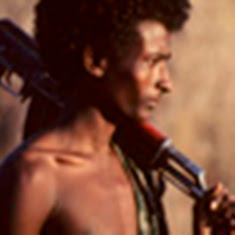
Modern man of the Afar or Danakil
The name of Ashurim or Surim is also explainable. The Romans who had colonized parts of North Africa had been engaged for several years in a low-level war “against two nomadic tribes, the Maketai and the Ausuriani” (Millar, 2006, p. 60) who unlike the Pharusii were camelmen. According to historian David Mattingly, the first were known in texts as “the Muctunia manus (from the deserts of Tripolis)”. The second of these are the Austuriani of the 6th century observer Corripus (Mattingly, p. 290 and 293). Sergi has used the word Micatani (Sergi, 1909, p. 50). Imakitan is still the name for the modern Kel Owey and Kel Assatartar Tuareg tribes of the Ahir region of Niger (Giazzi, 1996, p. 579)

Tuareg of the Imaketan clan of Kel Owey in modern country of Niger lead their camels. They are also early on known as Ukutameni or Kutama Berbers.
As for the Ausuriani (also written Austuriani or Austures) they are also the raiders and nomads of Tripolitania known to Ammianus Marcellinus of 4th century (Roque, D., p. 669) dwelling on the outskirts of Roman Africa in southern Tunisia which they raided from time to time. Ptolemy refers to them as the Astacures in his Geography 4:3. Thomas Bowdich in 1821 noted, “The Astacures are found, in Ptolemy, on the confines of Tripoli, and again, south of the Niger” (Bowdich, 1821, p. 11). Still another rendering of the name in texts was “Saturiani” ( J. Desanges, 2011). (Curiously, or perhaps just coincidently, the name of the Austuriani (or Astacures and Saturiani) has some seeming resemblance to Kel Assatartar).
These Ausuriani are the people Josephus mentions as the Ashurim or Surim, child of Keturah, from Genesis. Eusebius writing of this states "and from Asur, Assyria was named and from the other two Afra and Afer. And these he says joined Hercules in his expedition against Libya and Antaeus..." Joseph as well asserted “Syrians are held to be named from Surim (i.e. Asshurim), who was the grandson of Abraham from his wife Keturah. The people whom the ancients called Assyrians we now call Syrians, making a whole name from the part.” (The use of the word Assyria or Syria dates from "Ammurru" tribal settlement in the Levant).
Last edited:
Bed$tuy🇭🇹
Basic Instructions Before Leaving Earth 🇭🇹
According to Mattingly, Corripus at times uses the name Austur as a synonym for the “Laguatan” or “gens Ilaguas” or “Leuathae” of the Roman and neo-Roman texts. The name of the Tuareg clan of “Imaslagha” may in fact recall the name Ilaguas. The tribe of Ifuraces of Corippus, iii, 410-415 were also a Laguatan sub-tribe. The Moorish leader (mentioned in Byzantine texts) “Carcasan, for instance, was the chief of the Ifuraces tribe before he became the overall chieftain of the Laguatan” (Mattingly, 2003, p. 290). The Ausuriani were also sometimes called “Nasamones” according to Mattingly. The Tuareg are known to have retained the “Nasamonian” custom of sleeping near the tombs of ancestors to prophesize through dreams.(See previous posts).
The name Asturiani thus came to be a generic name for a confederation of tribes later known as the Levathes or Laguaten and Muctuni. Again, Mattingly says, “Both Corippus and Procopius indicated that the Laguatan/Leuathae were the principal tribal group in Tripoliania in the sixth century. By the time of the Arab invasions Lawata tribes were to be found over much of the territory between Cyrenaica and eastern Algeria. The confederation clearly absorbed many of the earlier tribes of this vast region, but the nucleus of this super-tribe was probably built around a migration of new people from the eastern Sahara” (Mattingly, 2003, p. 289).
The name Asturiani thus came to be a generic name for a confederation of tribes later known as the Levathes or Laguaten and Muctuni. Again, Mattingly says, “Both Corippus and Procopius indicated that the Laguatan/Leuathae were the principal tribal group in Tripoliania in the sixth century. By the time of the Arab invasions Lawata tribes were to be found over much of the territory between Cyrenaica and eastern Algeria. The confederation clearly absorbed many of the earlier tribes of this vast region, but the nucleus of this super-tribe was probably built around a migration of new people from the eastern Sahara” (Mattingly, 2003, p. 289).
Last edited:
Bed$tuy🇭🇹
Basic Instructions Before Leaving Earth 🇭🇹
These Leuathae or Lybians among whom were the Ausuriani, Ifuraces and Muctunia – the “Moors” of Corippus and other Byzantine writers - were thus mainly direct ancestors of the modern Tuareg under similar names. They were among the predatory “Maures” or “Moors” on the borders of the Roman provinces of north Africa encompassing much of what is today northern Libya and Tunisia in that period. Mattingly asserts, “The Austuriani raids were swift and fierce and were apparently not opposed by any significant body of troops. In 363 they reached the fertile hinterland of Lepcis Magna…” in northern Libya (Mattingly, p. 294).
In the 6th century these camel raiders are wearing long robes bearing long swords and wrist knives similar to their descendants. Another historian wrote, “The Astacures are found, in Ptolemy, on the confines of Tripoli, and again south of the Niger, near where our informants described the modern kingdom of Atagara…” (Bowdich, 1821, p. 11).
In the 6th century these camel raiders are wearing long robes bearing long swords and wrist knives similar to their descendants. Another historian wrote, “The Astacures are found, in Ptolemy, on the confines of Tripoli, and again south of the Niger, near where our informants described the modern kingdom of Atagara…” (Bowdich, 1821, p. 11).
Last edited:
Bed$tuy🇭🇹
Basic Instructions Before Leaving Earth 🇭🇹
It is safe to say that this is same group of Tuareg people were the population designated by the Hebrew book of Genesis 25 as the children of Keturah who Josephus wrote had taken over the country of troglodyte region first around in Red Sea in Arabia and Africa. He entitles his chapter on these “Midianites” and “Asur”: “How the Nation of the Troglodytes were Derived from Abraham by Keturah”.
 archive.chs.harvard.edu
archive.chs.harvard.edu

(These Trogodytes, were also referred to as Blemmyes, Be(d)ja, and Megaboroi — and Be(d)ja (Bedayat / Bedawi) provides the origin of the term “Bedouin” (Reynolds, 125). The ancient sources describe them as living mainly in the Eastern Desert of Egypt and in Ethiopia. A set of tables prepared for an article by Hans Barnard (“”Il n’ya pas de Blemmyes”) collates all of the ancient references to these peoples (or this people, referred to under various names).
Here’s a modern Bedja, care of Reynolds (p. 127), which amused me, because — despite the description in the caption — she has nothing like a “long narrow face and jaw”:
Like the Horites, who were identified as monstrous Rephaim and cave-dwellers, the Trogodytes and Blemmyes were described as monsters. Strabo describes the Trogodytes as having no voices, and the Blemmyes as having no heads but mouths and eyes in their chests. These were, after all, mythic descriptions of those who lived near the abyss at the end of the world (from which ‘Abyssinia’ is derived), beyond the mythic Yam Suph (neither ‘Red Sea’ nor ‘Reed Sea’, but mythic ouroboros).
The children of Keturah were named Jokshan, Madan, Midian, Ishbak, Shuah and Dedan (or Judadas). The Genesis chapter also says, the sons "of Jokshan: (were) Sheba and Dedan. The sons of Midian: Ephah, Apher, Hanoch, Abida, and Eldaah. All these were descendants of Keturah”. Josephus in his commentary on the people wrote that Ashurim or Assurim was the child of “Yudadas” a people whom, according to him, were dwelling in ‘western Ethiopia’. Judadas, settled the Judadeans, a nation of the western Ethiopians, and left them his name; as did Sabas [Saba] to the Sabeans…” (See The New Complete Works of Josephus 1999, p.58, Book 1, Chapter 6).
2. Geographers and Ethnographers on Africa
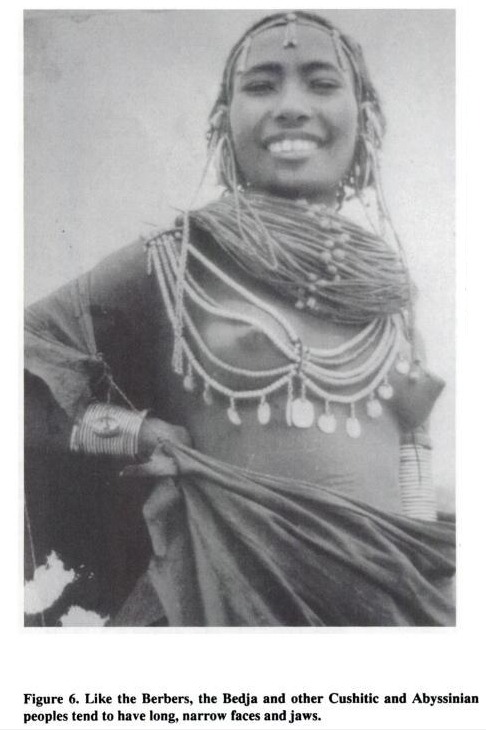
(These Trogodytes, were also referred to as Blemmyes, Be(d)ja, and Megaboroi — and Be(d)ja (Bedayat / Bedawi) provides the origin of the term “Bedouin” (Reynolds, 125). The ancient sources describe them as living mainly in the Eastern Desert of Egypt and in Ethiopia. A set of tables prepared for an article by Hans Barnard (“”Il n’ya pas de Blemmyes”) collates all of the ancient references to these peoples (or this people, referred to under various names).
Here’s a modern Bedja, care of Reynolds (p. 127), which amused me, because — despite the description in the caption — she has nothing like a “long narrow face and jaw”:
Like the Horites, who were identified as monstrous Rephaim and cave-dwellers, the Trogodytes and Blemmyes were described as monsters. Strabo describes the Trogodytes as having no voices, and the Blemmyes as having no heads but mouths and eyes in their chests. These were, after all, mythic descriptions of those who lived near the abyss at the end of the world (from which ‘Abyssinia’ is derived), beyond the mythic Yam Suph (neither ‘Red Sea’ nor ‘Reed Sea’, but mythic ouroboros).
The children of Keturah were named Jokshan, Madan, Midian, Ishbak, Shuah and Dedan (or Judadas). The Genesis chapter also says, the sons "of Jokshan: (were) Sheba and Dedan. The sons of Midian: Ephah, Apher, Hanoch, Abida, and Eldaah. All these were descendants of Keturah”. Josephus in his commentary on the people wrote that Ashurim or Assurim was the child of “Yudadas” a people whom, according to him, were dwelling in ‘western Ethiopia’. Judadas, settled the Judadeans, a nation of the western Ethiopians, and left them his name; as did Sabas [Saba] to the Sabeans…” (See The New Complete Works of Josephus 1999, p.58, Book 1, Chapter 6).
Last edited:
Bed$tuy🇭🇹
Basic Instructions Before Leaving Earth 🇭🇹
The occupants of the Trogodyte region are still called by the names Afar in Africa, or Afariyya on the other side of the Erythraean Sea in Arabia while across the sea near Sana’a people by the name of Abidah can still be found while, not far away once lived peoples of the “Saracens” named Maddenioi and Ghassan.
Simeon of Beth Arshan 520 A.D. refers to these Maddenioi as Ma’addaye (Shahid, 1995, p. 162), while Procopius 6th century mentions the Maddenoi as settled near and subjects of the Himyarites of South Arabia in the northern Hijaz. He writes “Other Saracens, adjoining these, held the coastland. They are called Maddenoi [that is, Ma'add], subjects of the Homeritae.” In fact Philostorgius in his Ecclesiastical Histories (Epitome of Book III, Chapter 4) wrote of the Homeritae or Himyarites saying, “Constantius sent ambassadors to those who were formerly called Sabaeans, but are now known as Homeritae, a tribe which is descended from Abraham by Keturah.”
Last edited:
Bed$tuy🇭🇹
Basic Instructions Before Leaving Earth 🇭🇹
This also implies that the names of Ma’ad and Maddenoi were associated with that of Madan and Madian or Midian of Genesis and the writings of Josephus. In addition there appears to have been a clan called Ma’dan among the Himyarites. As mentioned by Ibn Rabbih “Of the clans of Himyar are Ma’dan ibn Jusham ibn ‘Abd Shams ibn Wa’il ibn al Ghawth ibn Qatan ibn Arib…”.
The people today of theYemen called Bait Kathir still speaking Himyaritic-related dialects inhabiting Hadramaut and the mountains of Dhofar in Oman have been identified by some with the tribe of Keturah (Qeturah has the meaning of “incense”). They still regard trees they collect incense from their birthright. From the mountainous region of the Kathir tribe is said to come the best frankincense today. In certain genealogies the Kathir along with other south Arabian tribes of Mahra and Maddhij, and other Himyaritic–speaking peoples are derived from the Hamdan who were an ancient tribe of Sabaeans mentioned in inscriptions. (Their name is Ausala bin Malik bin Zaid).

Children of the Bayt Kathir and Shehr or Shaheyra tribes of modern southern Arabia were photographed over 100 years ago. The Kathir tribe is still famed for its incense and like many speakers of the Himyarite dialects are still notable for their African appearance.
Thus when it is said the Sabaeans crossed the sea a mere distance of 20 miles or so back into Africa, it is in part reference to these “children of Qeturah” whom according to Josephus and others had settled the area of Troglodytis in Africa where there were caves -and in the country of Arabia Felix (Fortunate Arabia) “as far as it reaches to the Red Sea.”
These same Ma’addaye or Ma’adei next to the Himyarites are listed later in Syrian inscriptions at Nemara with the ancient Yemenite tribe of Maddhij or Maddhig suggesting some connection between the people.

Children of the Banu Maddhij wait at a refugee camp in Yemen. Maddhij was a "son of Hamdan" in the genealogies
The people today of theYemen called Bait Kathir still speaking Himyaritic-related dialects inhabiting Hadramaut and the mountains of Dhofar in Oman have been identified by some with the tribe of Keturah (Qeturah has the meaning of “incense”). They still regard trees they collect incense from their birthright. From the mountainous region of the Kathir tribe is said to come the best frankincense today. In certain genealogies the Kathir along with other south Arabian tribes of Mahra and Maddhij, and other Himyaritic–speaking peoples are derived from the Hamdan who were an ancient tribe of Sabaeans mentioned in inscriptions. (Their name is Ausala bin Malik bin Zaid).

Children of the Bayt Kathir and Shehr or Shaheyra tribes of modern southern Arabia were photographed over 100 years ago. The Kathir tribe is still famed for its incense and like many speakers of the Himyarite dialects are still notable for their African appearance.
Thus when it is said the Sabaeans crossed the sea a mere distance of 20 miles or so back into Africa, it is in part reference to these “children of Qeturah” whom according to Josephus and others had settled the area of Troglodytis in Africa where there were caves -and in the country of Arabia Felix (Fortunate Arabia) “as far as it reaches to the Red Sea.”
These same Ma’addaye or Ma’adei next to the Himyarites are listed later in Syrian inscriptions at Nemara with the ancient Yemenite tribe of Maddhij or Maddhig suggesting some connection between the people.
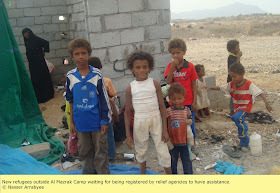
Children of the Banu Maddhij wait at a refugee camp in Yemen. Maddhij was a "son of Hamdan" in the genealogies
Last edited:
Bed$tuy🇭🇹
Basic Instructions Before Leaving Earth 🇭🇹
The name of the Maddhij (also written Maddhig) may very possibly be related to the Tuareg or Berber ancestor Madhagis or Madhgis el-Abter or Botr who is spoken of in certain Arabic texts with reference to the ancestors of the Berbers. Ibn Hakam wrote: “These say that the Beranes were the children of Berr, a descendant of Mazigh , the son of Canaan ; and that the Botr were the posterity of Berr the son of Cais, the grandson of Ghailan” (Jones, 1868, p. 68).
The 14th century Ibn Khaldun mentioned a similar genealogy for Madhgis. “Madghis son of Herek son of Hercac son of Guerad son of Mazigh son of Herec son of Harik son of Bedian son of Kanan son of Ham” (MacMichael, 1922, p. 202). Madghis was ancestral to the Leuathae (Laguatan) or ancient Tuareg tribes mentioned above. Mattingly notes, “The spread of the Laguatan confederation along the oases of the northern Sahara (from Mattingly 1983) were traditionally linked with Botr berbers. These Botr ‘neoberberes’ moved westward along the SiwaAugila chain of oases from the third century onwards…” (Mattingly, 2003, p. 289).

The 14th century Ibn Khaldun mentioned a similar genealogy for Madhgis. “Madghis son of Herek son of Hercac son of Guerad son of Mazigh son of Herec son of Harik son of Bedian son of Kanan son of Ham” (MacMichael, 1922, p. 202). Madghis was ancestral to the Leuathae (Laguatan) or ancient Tuareg tribes mentioned above. Mattingly notes, “The spread of the Laguatan confederation along the oases of the northern Sahara (from Mattingly 1983) were traditionally linked with Botr berbers. These Botr ‘neoberberes’ moved westward along the SiwaAugila chain of oases from the third century onwards…” (Mattingly, 2003, p. 289).
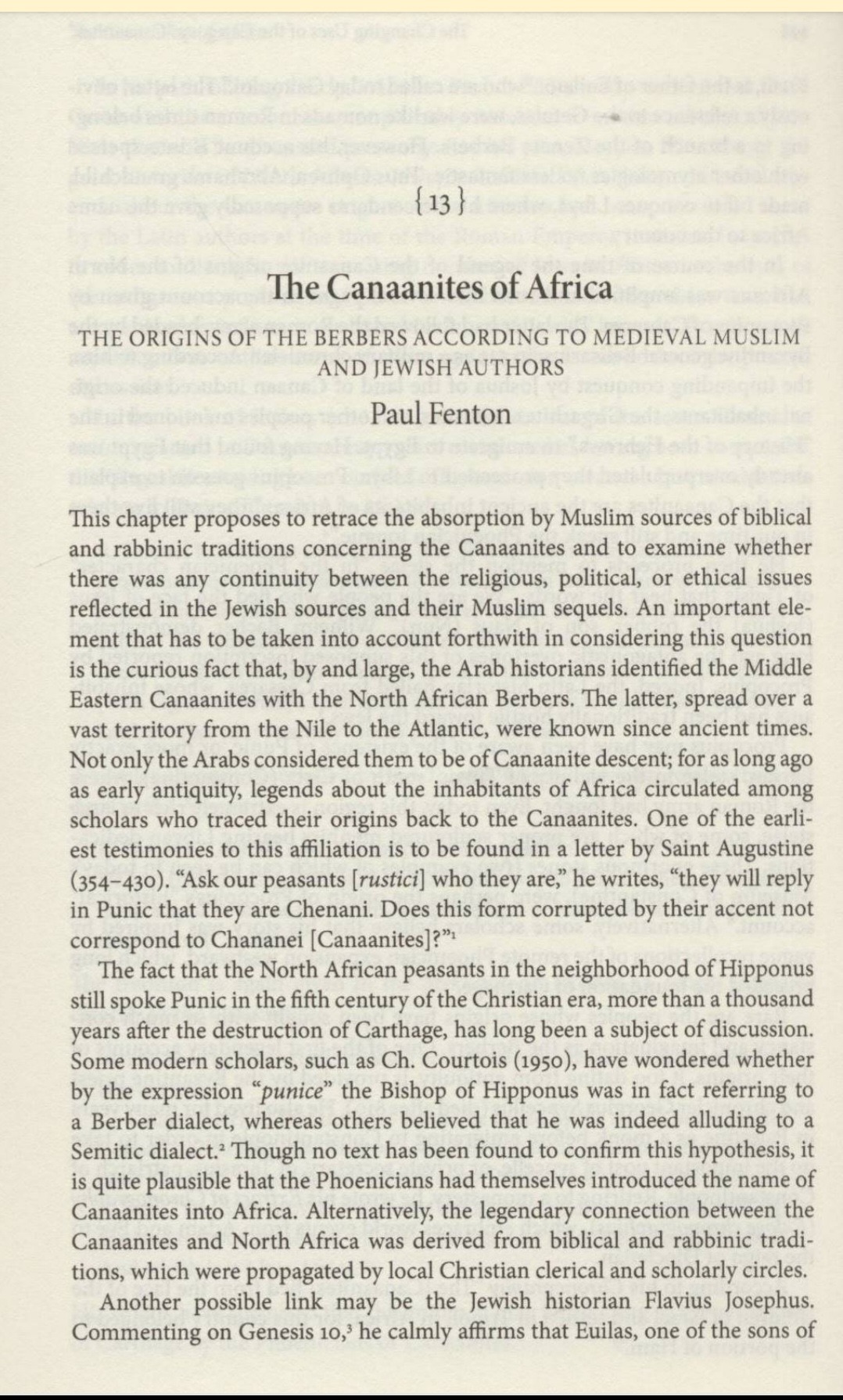

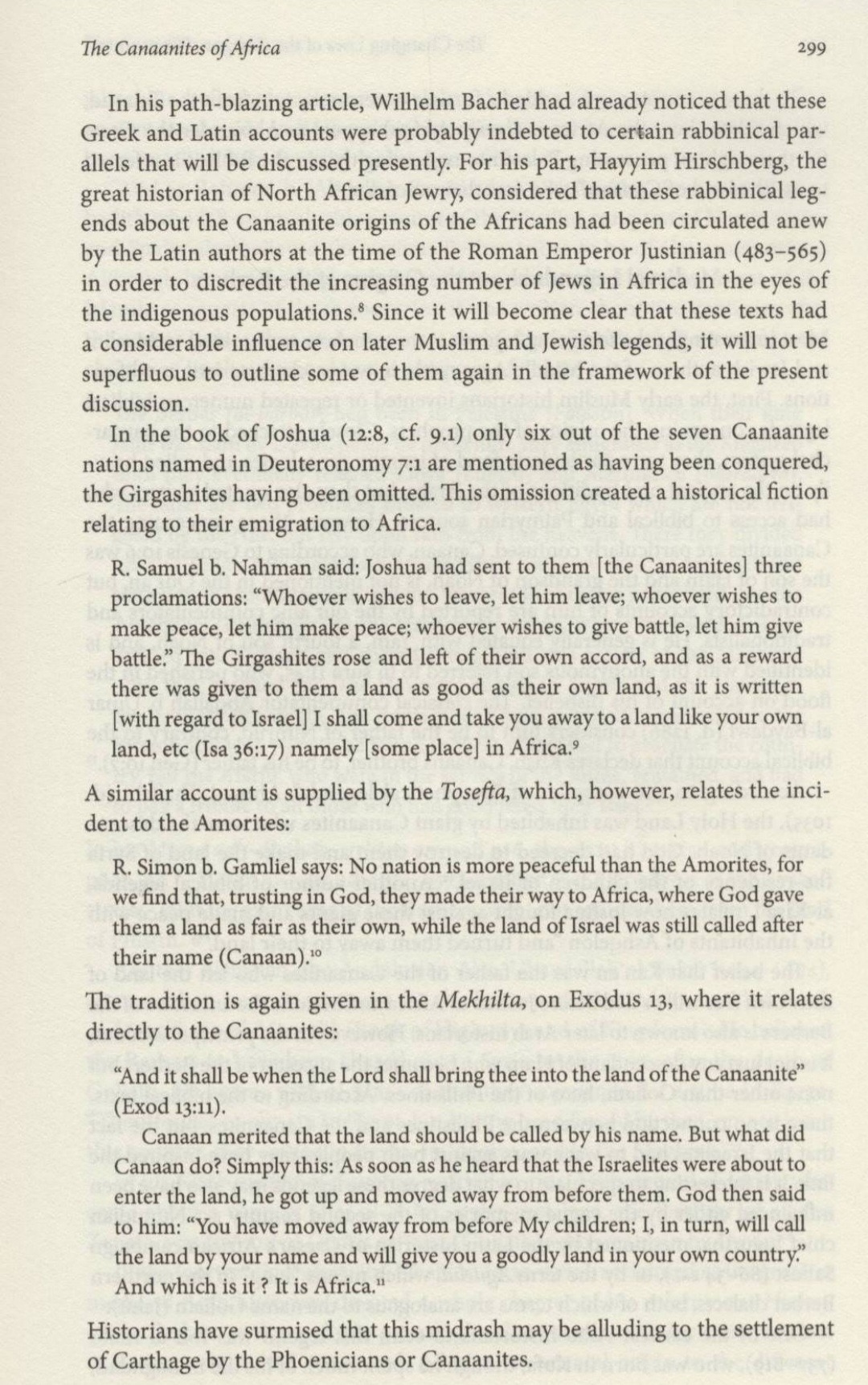
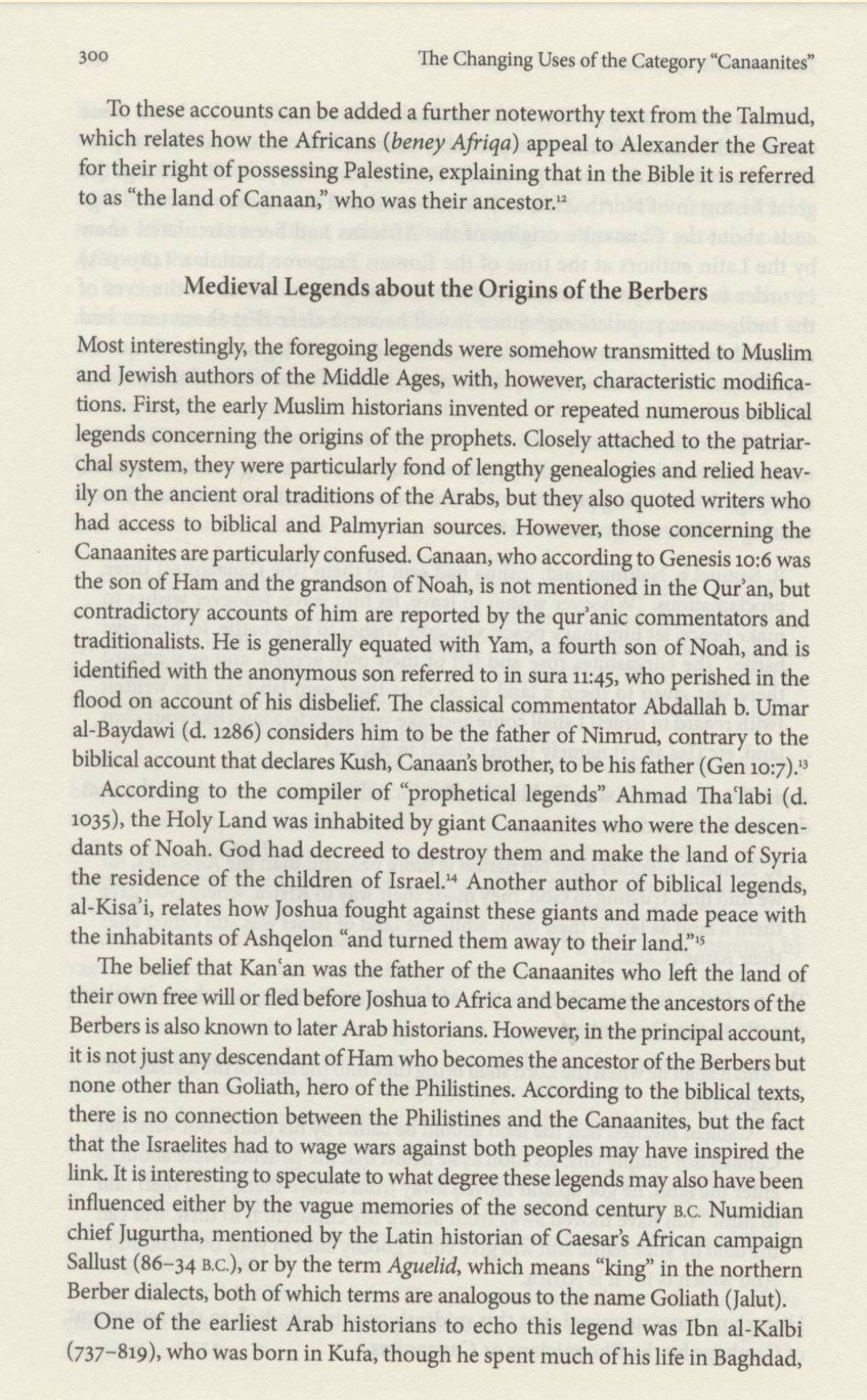
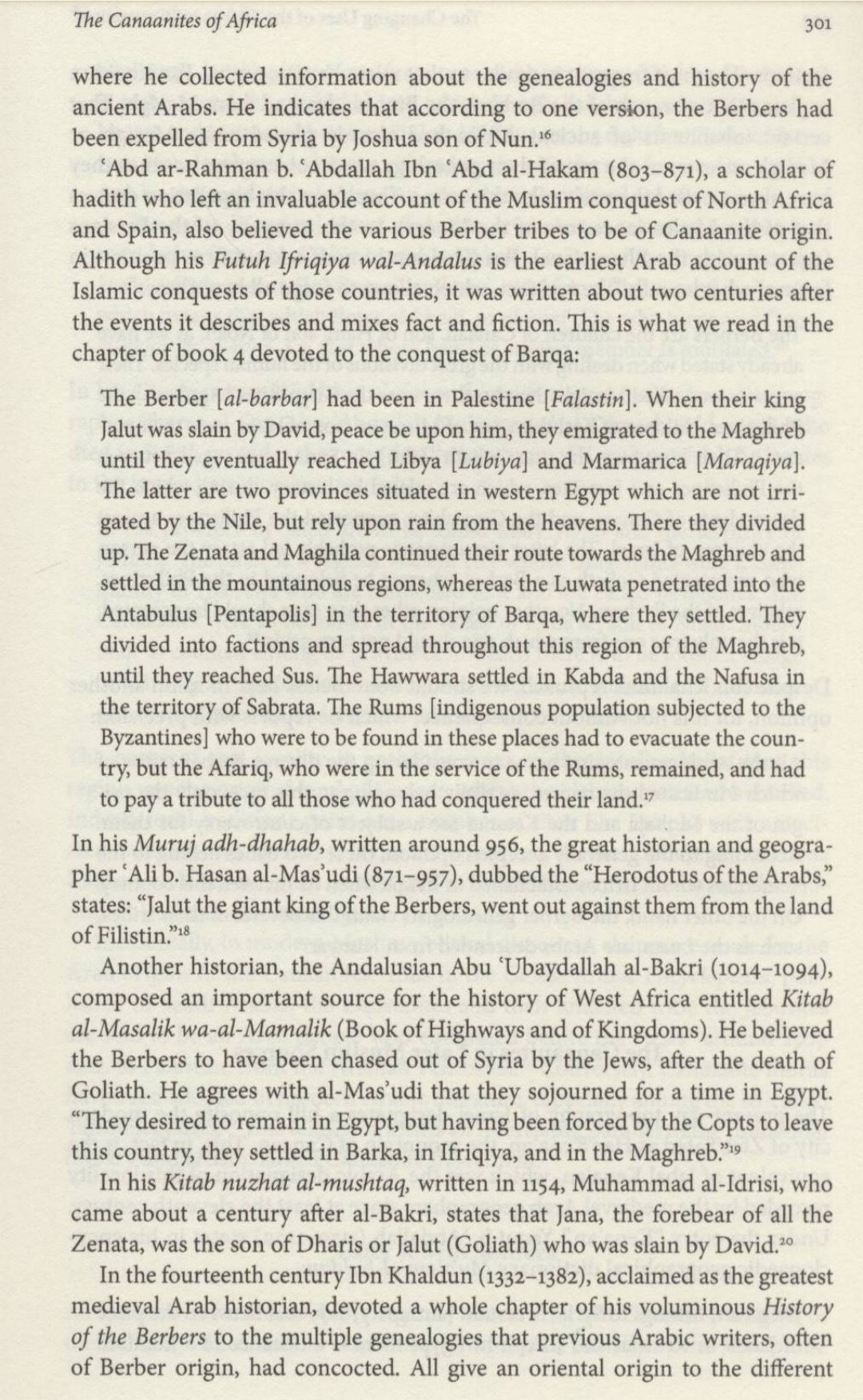
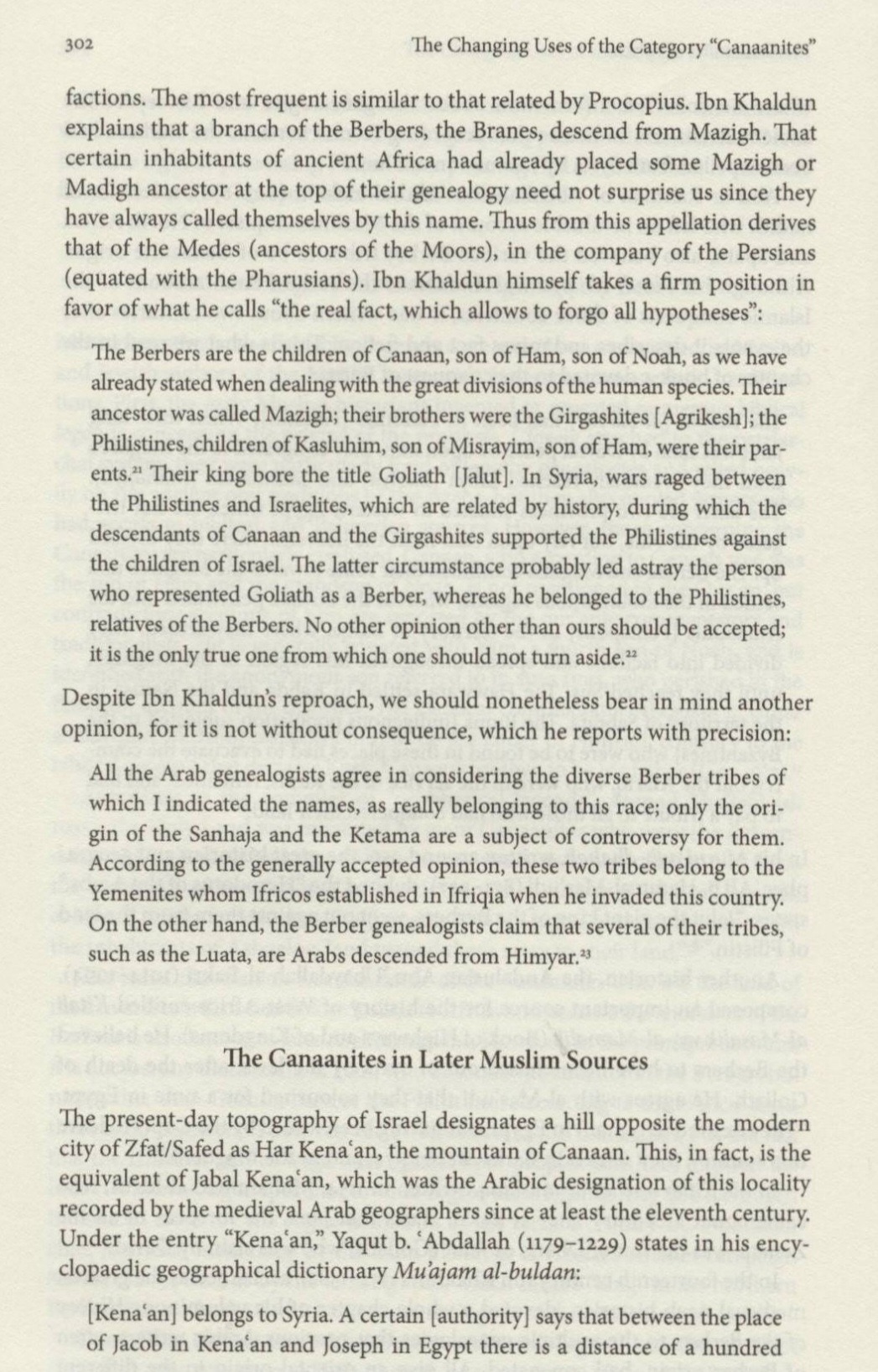
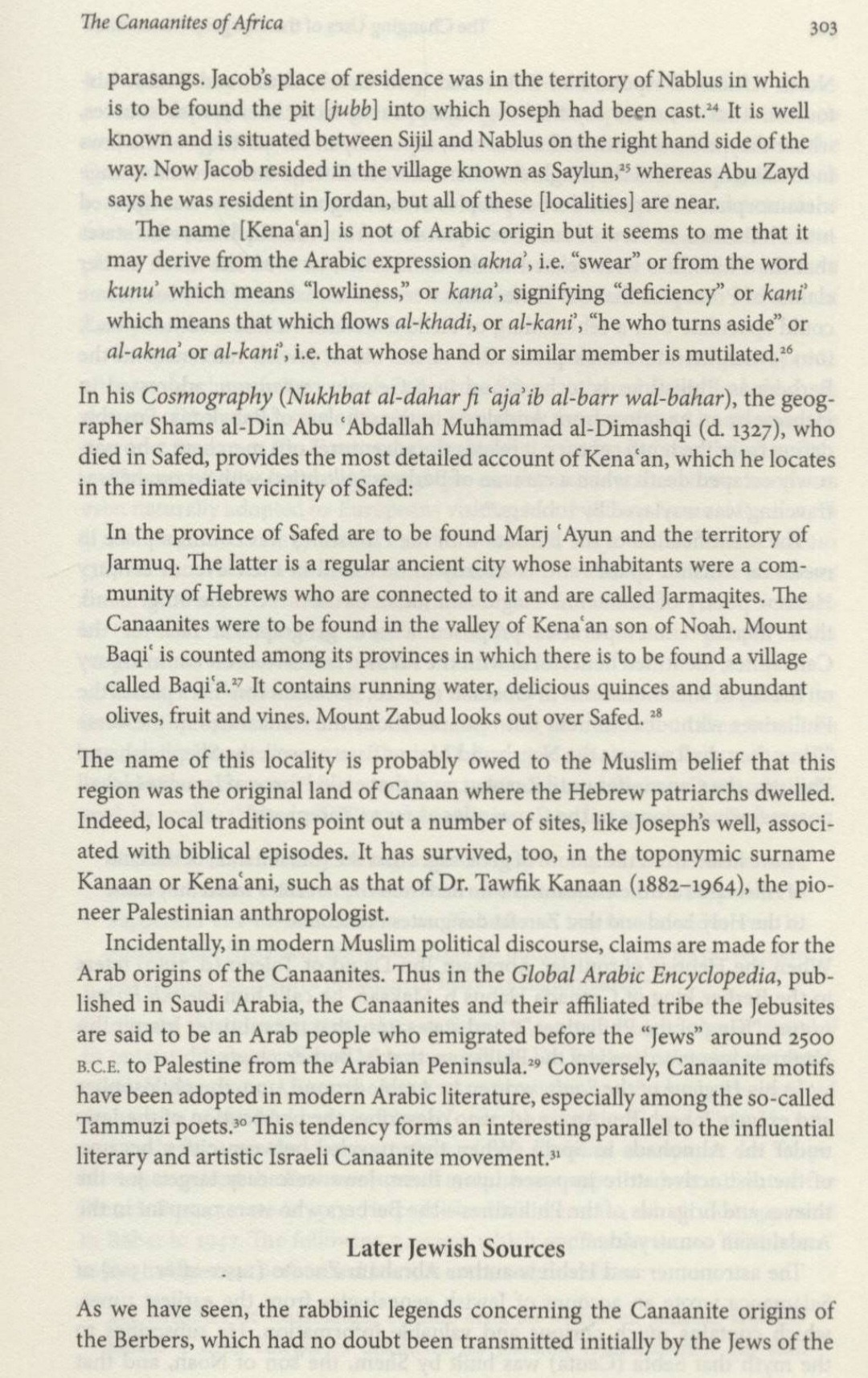
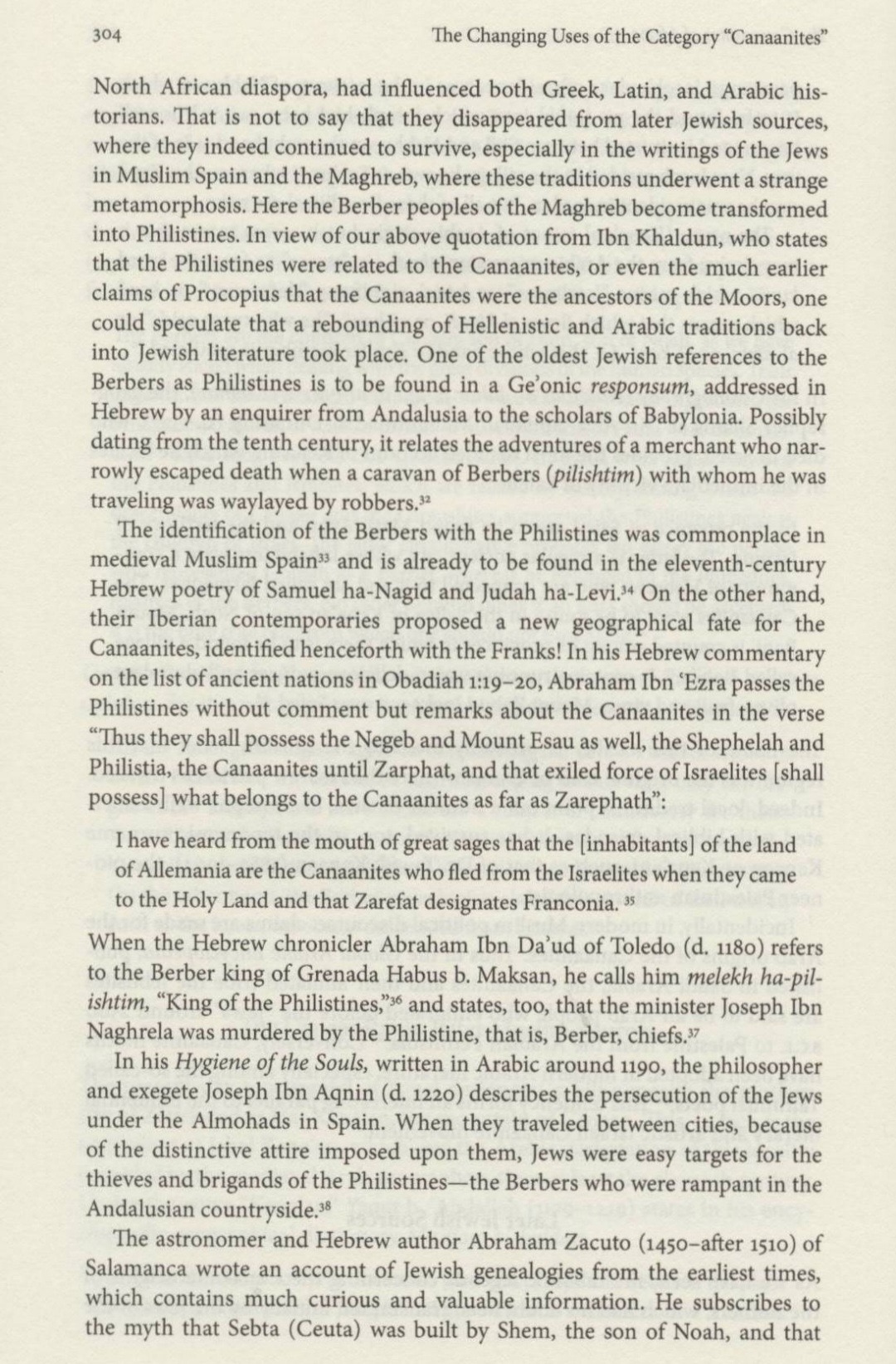
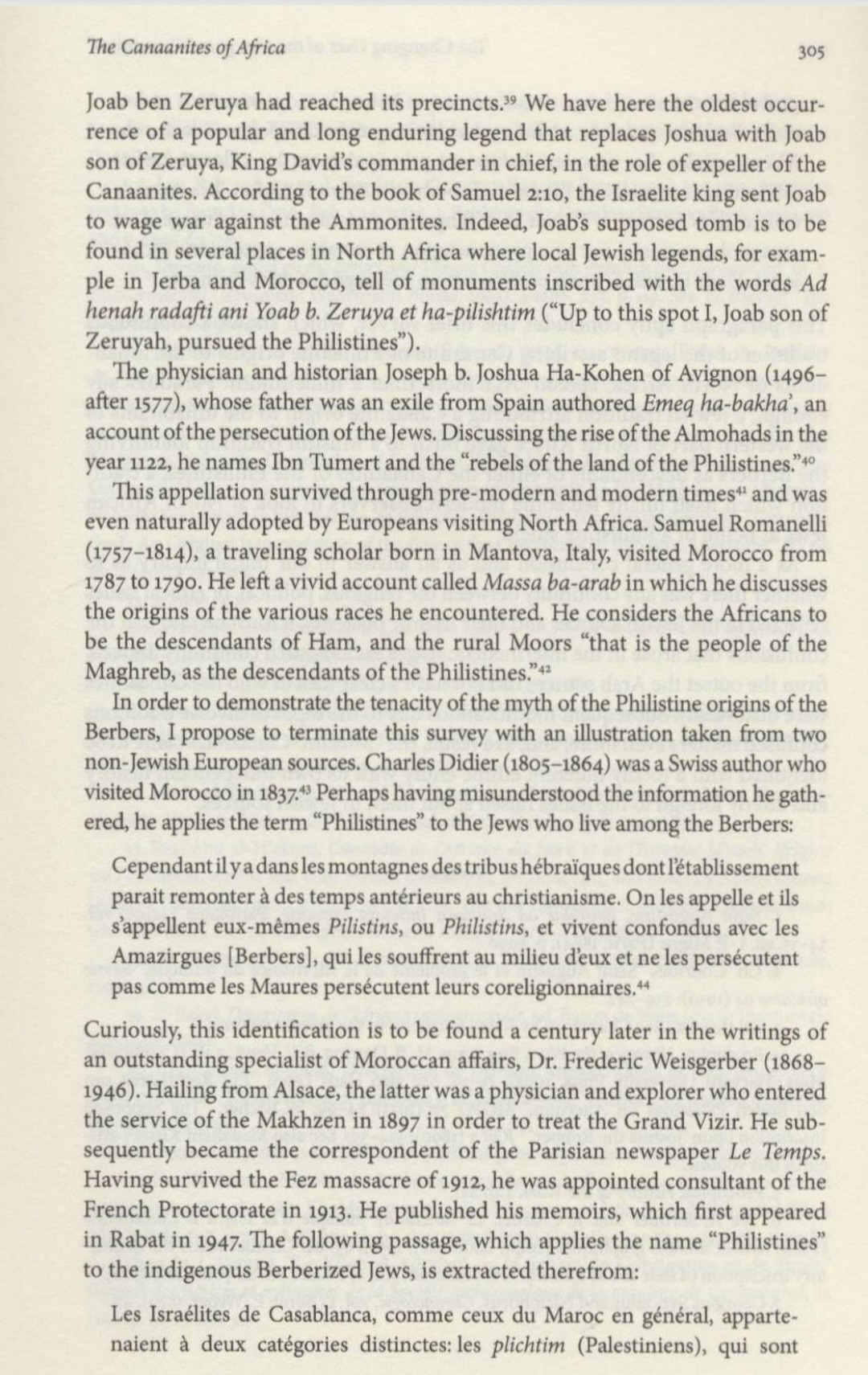
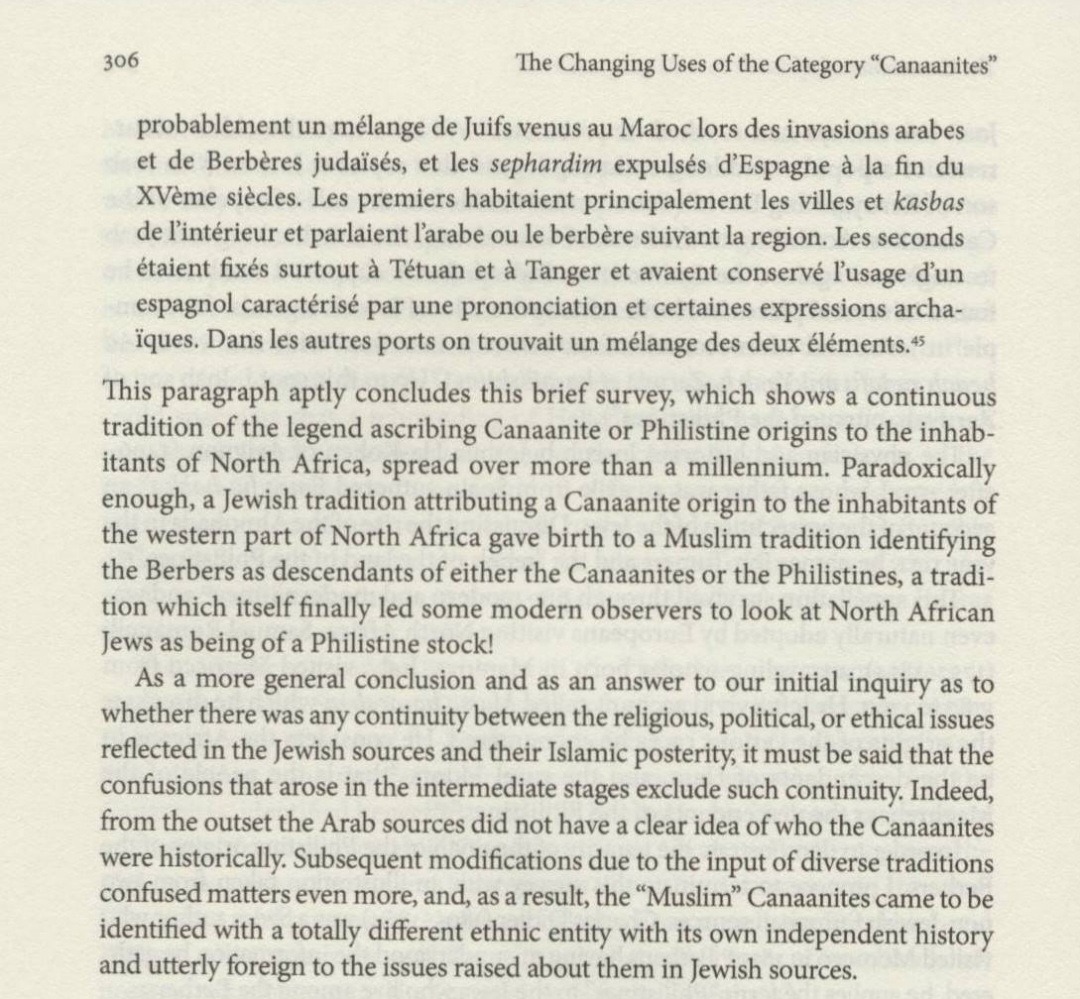
Attachments
Last edited:
Bed$tuy🇭🇹
Basic Instructions Before Leaving Earth 🇭🇹
Confirmation that the name of the Ma’adayye is connected with that of the Madian or Midian of the book of Genesis is found in the Arab genealogy noted by Tabari who wrote that .Ma’ad who fathered the Northern Arabs was the son of a woman named Mahdad al-Lihamm or Al-Lahm who is grandson to “Al-Tawsam”. “Ma`add's mother was Mahdad bt. al-Lihamm according to others, al-Lahm b. Jalhab b. Jadis or b. Tasm, or b. al-Tawsam, one of the descendants of Yaqshan.” There can be little doubt this Tawsim and Lihamm are Letusim and Lehummim of Genesis 25, grandchildren of Midian’s brother Jokshan where it is said, “And Jokshan begat Sheba, and Dedan. And the sons of Dedan were Asshurim, and Letushim, and Leummim”. Al-Tabari writes Lihamm was at times said to be son of Al-Tawsim, whom he calls “one of the descendants of Yokshan, the son of Abraham the friend of the Compassionate” (Watt and McDonald, 1988, p. 173)
Attachments
Bed$tuy🇭🇹
Basic Instructions Before Leaving Earth 🇭🇹
The 14th c. Damascus born Abulfeda makes Tasm the son of "Lud" or El-Aoudh a son of Shem - or descendant of Ham in other traditions. (Sale, 1748, p. 373)
This among many other historical assertions is confirmation that the people originating in southern Arabia were in fact the people to whom the names of the children of Keturah and Midian were derived. The occupants of the “Trogodyte” region of Africa are still called by the names Afar in Africa, and are Afari or Afariyya on the other side of the Erythraean Sea in Arabia, corresponding to the Apher son of Midian, or the Afra, (Afer) son of Madan of Josephus and Cleodemus. The name of Anoch brother of Afren may have some connection with another name for the Afar in Africa, which is Danakil.
Tabari also mentions Ma’ad in connection with the Yemenite land of Shamran or Biblical Simran/Zimran another "brother of Midian" and "Madan".
After speaking of Lihamm or “Lehummim” and Ma’add he goes on to say in his Muhammad at Mecca that the Ma’add were brethren to the Akk who had lived in Shamran–
“Some genealogists say that ‘Akk departed from Samran, in the Yemen , leaving his brother Ma’add. This is because when the people of Hadur killed Shu’ayb b. Dhi Mahdam al Haduri, God sent Nebuchadnezzar against them as a punishment. Armiya and Barkhiya went away taking Ma’add with them and when the warfare had died down they took him back to Mecca. ..They quote the following verses in proof of the above story: We left our brothers, al Dith and’Akk on their way to Samran and they departed quickly”. (Watt and McDonald, 1988, p. 37)
According to Arabic and Qoranic tradition the Shu’aib just mentioned is a Midianite prophet and leader who in the Genesis book is likely represented by the name of Shuah (Suhi or Sous) “brother” of Midian, Madan and Simran (Genesis 25:2). The medieval Syrian Ibn Kathir (14th c.) makes Shu’aib a 4th great grandson of Midian. Some Arabic sources say he is the same personnage as Jethro. The name of the village or region of Samran or Shamran which in the Arab stories is located in the Yemen is also obviously connected to Simran or Zimran relative of Letusshim, Assurim and brother of Midian and Madan. Genesis 25:2 states of Keturah, "And she bare him Simran, and Jokshan, and Medan, and Midian, and Ishbak, and Shuah."
The two individuals Armiya and Barkiya spoken of by Tabari above are in fact referred to in the Bible of the Hebrews as the prophet Jeremiah and his friend Baruch. In Jeremiah 36:4 mention is made of the two who lived in the time of Nebuchadnezzar. Thus the southern Arab tribes Ma’ad or Maddenioi, Tawsim, Lahm and Lihamm, Shamran can be identified with Madan, Midian Letusim, Leummim/Lehummim, Simran/Zimran of Genesis, children and descendants of Keturah.
(At present Jebel Lihamm is a mountain near a place or mountain named Sayyān (Sion?) in the region of Sana’a, Yemen.)
This among many other historical assertions is confirmation that the people originating in southern Arabia were in fact the people to whom the names of the children of Keturah and Midian were derived. The occupants of the “Trogodyte” region of Africa are still called by the names Afar in Africa, and are Afari or Afariyya on the other side of the Erythraean Sea in Arabia, corresponding to the Apher son of Midian, or the Afra, (Afer) son of Madan of Josephus and Cleodemus. The name of Anoch brother of Afren may have some connection with another name for the Afar in Africa, which is Danakil.
Tabari also mentions Ma’ad in connection with the Yemenite land of Shamran or Biblical Simran/Zimran another "brother of Midian" and "Madan".
After speaking of Lihamm or “Lehummim” and Ma’add he goes on to say in his Muhammad at Mecca that the Ma’add were brethren to the Akk who had lived in Shamran–
“Some genealogists say that ‘Akk departed from Samran, in the Yemen , leaving his brother Ma’add. This is because when the people of Hadur killed Shu’ayb b. Dhi Mahdam al Haduri, God sent Nebuchadnezzar against them as a punishment. Armiya and Barkhiya went away taking Ma’add with them and when the warfare had died down they took him back to Mecca. ..They quote the following verses in proof of the above story: We left our brothers, al Dith and’Akk on their way to Samran and they departed quickly”. (Watt and McDonald, 1988, p. 37)
According to Arabic and Qoranic tradition the Shu’aib just mentioned is a Midianite prophet and leader who in the Genesis book is likely represented by the name of Shuah (Suhi or Sous) “brother” of Midian, Madan and Simran (Genesis 25:2). The medieval Syrian Ibn Kathir (14th c.) makes Shu’aib a 4th great grandson of Midian. Some Arabic sources say he is the same personnage as Jethro. The name of the village or region of Samran or Shamran which in the Arab stories is located in the Yemen is also obviously connected to Simran or Zimran relative of Letusshim, Assurim and brother of Midian and Madan. Genesis 25:2 states of Keturah, "And she bare him Simran, and Jokshan, and Medan, and Midian, and Ishbak, and Shuah."
The two individuals Armiya and Barkiya spoken of by Tabari above are in fact referred to in the Bible of the Hebrews as the prophet Jeremiah and his friend Baruch. In Jeremiah 36:4 mention is made of the two who lived in the time of Nebuchadnezzar. Thus the southern Arab tribes Ma’ad or Maddenioi, Tawsim, Lahm and Lihamm, Shamran can be identified with Madan, Midian Letusim, Leummim/Lehummim, Simran/Zimran of Genesis, children and descendants of Keturah.
(At present Jebel Lihamm is a mountain near a place or mountain named Sayyān (Sion?) in the region of Sana’a, Yemen.)
Last edited:
Bed$tuy🇭🇹
Basic Instructions Before Leaving Earth 🇭🇹
An early dictionary of Islam says that at a remote period, “tribes of Tasm and Jadis settled between Mecca and Al-Madinah and occupied the whole level country of al-Yaman.” Amalek and Tasm were considered to have derived from a single people. Thus Al-Tabari asserted in Ta'rikh al-Rusul wa'l-Muluk, the name of Amalek came from a leader of the Tasim. - “I was told that the Tasm and Jadis were the dwellers of Al-Yamamah. At the time, Al-Yamamah was a fertile and highly cultivated land; a land most prosperous with a variety of fruit, wondrous orchards and tall castles. They were ruled by a ruler of the Tasm, a wicked and tyrannical king, nothing could deter him from his capriciousness. His name was Amluq…” (Perlmann, 1987, p. 151)
Tabari recorded the tradition elsewhere linking Tasm and Urayb ancient tribes of the Amalekite stock with tribes of the Berbers and a chief named “Faraan” whose name again recalls the biblical Afran or Ifren who with Assur or Asur, Letushim, Lehummim, Judadas were children of Keturah and whom Josephus noted were dwelling in Africa in his time. And Tabari says – “ 'Imliq — who is 'Urayb — and Tasm and Umaym are sons of Lud b. Shem b. Noah. Imliq is the father of the Amalekites from whom came the Berbers, who are children of Thamila bin Maarib bin Faaraan bin 'Amr bin 'Imliq bin Lud bin Sam, with the exception of the Sinhaja and Kitama who are offspring of Furayqish bin Qays…” (Brinner, 1987, p. 17)
This text suggests the Urayba or Aureba Berbers, a people of the Luata in North Africa, derived their name and origin from the ancient Arabian clan of Urayb and Faraan, which in Arab sources belonged to the Amalekites and Al-Tawsim (or Letushim). It is in line with the biblical passages which imply that the Midianites and Amalekites were originally one camel-owning people with a smith clan or "Kenites" among them, somewhat like the ancient Moors and their modern Tuareg descendants whose nobles and smith castes both still claim a Yemenite and Hebrew or "Phoenician" origin. The biblical book of Judges 7:12 mentions them together. "And the Midianites and the Amalekites and all the people of the East lay along the valley like locusts in abundance, and their camels were without number…”.
Colonial historians like the 19th century James Orr noted the African and Arab tradition that "the Amalekites" after being defeated by Joshua “fled into northern Africa, where they are said to have grown into the Berber races...” (Orr, 1915).
Banu Umaym or Umama mentioned above is the name of a tribe of Azd affiliation - a branch of the Azd in the Tihama who were likely the so-called "Emim" or "Amim" - "giants" of Canaan.
Tabari recorded the tradition elsewhere linking Tasm and Urayb ancient tribes of the Amalekite stock with tribes of the Berbers and a chief named “Faraan” whose name again recalls the biblical Afran or Ifren who with Assur or Asur, Letushim, Lehummim, Judadas were children of Keturah and whom Josephus noted were dwelling in Africa in his time. And Tabari says – “ 'Imliq — who is 'Urayb — and Tasm and Umaym are sons of Lud b. Shem b. Noah. Imliq is the father of the Amalekites from whom came the Berbers, who are children of Thamila bin Maarib bin Faaraan bin 'Amr bin 'Imliq bin Lud bin Sam, with the exception of the Sinhaja and Kitama who are offspring of Furayqish bin Qays…” (Brinner, 1987, p. 17)
This text suggests the Urayba or Aureba Berbers, a people of the Luata in North Africa, derived their name and origin from the ancient Arabian clan of Urayb and Faraan, which in Arab sources belonged to the Amalekites and Al-Tawsim (or Letushim). It is in line with the biblical passages which imply that the Midianites and Amalekites were originally one camel-owning people with a smith clan or "Kenites" among them, somewhat like the ancient Moors and their modern Tuareg descendants whose nobles and smith castes both still claim a Yemenite and Hebrew or "Phoenician" origin. The biblical book of Judges 7:12 mentions them together. "And the Midianites and the Amalekites and all the people of the East lay along the valley like locusts in abundance, and their camels were without number…”.
Colonial historians like the 19th century James Orr noted the African and Arab tradition that "the Amalekites" after being defeated by Joshua “fled into northern Africa, where they are said to have grown into the Berber races...” (Orr, 1915).
Banu Umaym or Umama mentioned above is the name of a tribe of Azd affiliation - a branch of the Azd in the Tihama who were likely the so-called "Emim" or "Amim" - "giants" of Canaan.
Last edited:
Bed$tuy🇭🇹
Basic Instructions Before Leaving Earth 🇭🇹
Tracing Keturah’s Brood: Banu Gassan as Kush and Jokshan
The 13th century Sa’id of Andalusia was a man of Central Asian ethnicity born in Andalusia and brought up in Marrakesh, Morocco. He wrote that at the time of David, king of the Israelites, and of King Shammar al-Ra’ish or Rujash - ruler of the Himyarites and founder of Samarkand - the bursting of the dam at Mar’ib took place devasting the surrounding area and making some of the tribes of a Sabaeans, Himyarites and Kahlan scatter to other parts of the peninsula.
Sa’id reported the following concerning these tribes:
The 13th century Sa’id of Andalusia was a man of Central Asian ethnicity born in Andalusia and brought up in Marrakesh, Morocco. He wrote that at the time of David, king of the Israelites, and of King Shammar al-Ra’ish or Rujash - ruler of the Himyarites and founder of Samarkand - the bursting of the dam at Mar’ib took place devasting the surrounding area and making some of the tribes of a Sabaeans, Himyarites and Kahlan scatter to other parts of the peninsula.
Sa’id reported the following concerning these tribes:
The reason for the destruction of the dam of Ma’rib, if our sources are correct, was the small flood that devastated the dam and the city of Ma’rib as well as most of the country. The Ma’rib was then inhabited by the Azd and their allies, but upon its destruction they were scattered in the rest of the country; al-Aws and al-Khuzruj, who later became al-Ansar, went into Yathrib in the land of Hijaz. This is Madinat al-Nabi [the city of the prophet] – peace be upon him. Khuza’ah went into Makkah [Mecca] in the land of Tahamah. Wadi’ah, Yahmad, Khuzam, Jadyl, Malik al-haryth, and al-Atyk went into Amman and became known as the Azd of Amman. Masikhah, Myda’an, Lahab, Amir, Yashkur, Bariq, Ali ibn Uthman, Shamran, Al Hujr ibn al-Hind, and Daws went into al Surat, which is a chain of mountains that cuts through the length of the peninsula from Yemen to the borders of al-Sham. Malik ibn Uthman ibn Daws went into Iraq. Jafnah and Banu Muharriq ibn Amru ibn Amir and Quda’ah went into al-Sham (Salem,1996, p. 42-43).
The name of Jokshan/Kushan, brother of Midian, Madan and Simran - whose names are recalled in Myda’an and Shamran - is easily identifiable as the early Azd tribes of Ghissan (Ghassan, Gassan or Gasan). Ghissan and Shumran are both from the Yaman. The Gasan are also historically documented as a “Saracen” people and known in texts as Gassandoi, “Kasandreis” (mentioned by Agatharchides), “Gasandenses” or “Kassanitae” (placed by Ptolemy southeast of Mecca) (Arrowsmith, 1832, p. 228). As well, both Photius and Diodorus mention these Gassan dwelling next to the Debai of the Asir in southwest Saudi Arabia or “Arabia Felix”(Retso, 2003, pp.298- 299; see also Forster, 2004, p. 247).
Bed$tuy🇭🇹
Basic Instructions Before Leaving Earth 🇭🇹
The tribe of Gassan, whose south Arabian origins were described by al-Masudi and other medieval Middle Eastern authors, was the easternmost branch of a large group split into several sub-groups, including the Azd Sarat, Azd Sanua, and Azd Oman. An inscription at Nemara in Syria also mentions a Gassan ruler as a “king of the two Asds” and Ma’ad. (D.T. Potts, 1988, p. 153).
The tradition of Azd dispersal from the Yemen is recorded by many writers, including Sa’id of Andalusia who wrote that Azd was -
The tradition of Azd dispersal from the Yemen is recorded by many writers, including Sa’id of Andalusia who wrote that Azd was -
a name borne by the most important section of the people who inhabited the country of Saba and its capital Ma'rib, at the time of the rupture of the dyke of 'Arim and of the ruin to which that portion of Yaman was in consequence reduced. All but a small section of the Azdites abandoned the country. The chief body went to the Tihamah of Yaman, inhabited by the tribes of 'Akk and Ash'ar. Here they settled in the neighbourhood of a pool named Ghassan, situated between the rivers Zabid and Rima. After a lengthened stay, dissensions with the original occupants of the country compelled the Azdites to depart. A portion of the tribe established itself in Najran, in the neighbourhood of the Madhhijites who had long occupied and ruled the country” (Cassels, 2005, p. 216).

Ancient remains of the city of Ma'rib (Meribah of Exodus 17)
"This is the water of Meribah, because the people of Israel strove with the Lord, and He was sanctified in them" Numbers 20:7
Al- Baladhuri (b. 892) in fact made the Azd say “We are the descendants of Ghassan of Mazin there is no doubt…”(p. 32). This name of Mazin who is considered the ancestor of the Azd is sometimes rendered Mohsin. According also to the Arabic texts of Al –Baladhuri and others, this people called al-Azd had in ancient times come to settle near a Yemenite “spring” or pool of water called Ghassan. Philip Hitti’s translation of al-Baladhuri’s text, Origins of the Islamic State reads, “… al-Azd had settled near a spring called Ghassan. Hence their name Ghassan.” (Hitti, 1916, 2011, p. 32).
A number of sources say similarly to Sa’id’s text that, “From the great family of Cahlan (descendant of Cahtan) the Azdite branch supplied to Mecca the tribe of the Khaza’a, and to Medina, the Aus and Khazraj, while to Syria it gave the dynasty of Ghassan.” (See p. 371, Calcutta Review published, 1853). According to Al-Qalqashandī also, “Khuzā'ah are a tribe from the Azd”. **
Historically the Azd are known to have first emerged in the highlands of the Asir or as-Shara (Sahra’at or Sharawat) mountains of southwestern Arabia region of southwest Saudi Arabia (which was included in the Yemen of the ancient world). This was an area ranging from the Wadi Kanawna to the town of Ta’if (Khanam, 2005, p. 66).

Boy of the mountains of Assir or Asir in Arabia, which name was the biblical "Ezer" a "duke" of Edom
The tribes of Azd there venerated Dhu-Šarā or “the Lord of Shara’a (Šarā)”. It was represented by a black quadrangular stone. According to the Encyclopaedia of Religion and Ethics Vol. 1, “ He was represented by an idol in the territory inhabited by the tribe of Daus not far from Mecca and among them the name Abd ‘sh- Shara still survived” (1908, p. 663).
Al-Masudi also speaks of the story of early Azd people under their prophetic leader Amr Muzaikiyya and his diviner wife Zarifeh whose story parallels the biblical Midianite Moses and wife Zipphorah, the so-called “Cushite”. In his story - 'They continued on their way and came to a camp between the land of the Aharites and Akk, near a pool named Gassan, between two valleys called Zebid and Rima, and they drank the water of the pool" (Velikovsky, Collected Essays, Archive). This Rima could only refer to modern Rima or Rema’a in Yemen not far from the valley or “wadi” called Zabid
. The Book of Numbers 21:12 paralleling the story of the Azd mentions this region of Zebid with reference to Moses, and authors rendered the word as “Zerid” or “Zared” - “From thence they removed [i.e., from the wilderness which is before Moab, toward the sunrising], and pitched in the valley of Zerid. From thence they removed and pitched on the other side of Arnon ... And from thence to Beer [pool]: that is, the well whereof the Lord spake unto Moses…” (Velikovsky)
Finally the book of Judges 4:7, 4:13 and 5:21 refers to the same area as “brook”, “stream” or “torrent valley of Kishon” where Canaanites were swept away. “The river of Kishon swept them away, that ancient river, the river Kishon.”
The term Kishn or Qishn remains a common name among the Himyaritic–speaking peoples of southern Arabia such as the Mahra for their ports. From Ibn Mudjawir we learn that the Tihama plain in fact located between the Wadi Zabid and Rema'a in the Yemen retained its ancient name "Kush" or Kus even into the Islamic era. Ibn Mugawir, Tarikh 83 (Retso, 2003, p. 231, fn.52)

Hodeidah or Hudayda in Tihama in Yemen - "between Rema'a and Zabid" where the Azd Gassan or "Jokshan" stopped in their "exodus" from Marib ("Meribah" Exodus 17).

Ancient remains of the city of Ma'rib (Meribah of Exodus 17)
"This is the water of Meribah, because the people of Israel strove with the Lord, and He was sanctified in them" Numbers 20:7
Al- Baladhuri (b. 892) in fact made the Azd say “We are the descendants of Ghassan of Mazin there is no doubt…”(p. 32). This name of Mazin who is considered the ancestor of the Azd is sometimes rendered Mohsin. According also to the Arabic texts of Al –Baladhuri and others, this people called al-Azd had in ancient times come to settle near a Yemenite “spring” or pool of water called Ghassan. Philip Hitti’s translation of al-Baladhuri’s text, Origins of the Islamic State reads, “… al-Azd had settled near a spring called Ghassan. Hence their name Ghassan.” (Hitti, 1916, 2011, p. 32).
A number of sources say similarly to Sa’id’s text that, “From the great family of Cahlan (descendant of Cahtan) the Azdite branch supplied to Mecca the tribe of the Khaza’a, and to Medina, the Aus and Khazraj, while to Syria it gave the dynasty of Ghassan.” (See p. 371, Calcutta Review published, 1853). According to Al-Qalqashandī also, “Khuzā'ah are a tribe from the Azd”. **
Historically the Azd are known to have first emerged in the highlands of the Asir or as-Shara (Sahra’at or Sharawat) mountains of southwestern Arabia region of southwest Saudi Arabia (which was included in the Yemen of the ancient world). This was an area ranging from the Wadi Kanawna to the town of Ta’if (Khanam, 2005, p. 66).

Boy of the mountains of Assir or Asir in Arabia, which name was the biblical "Ezer" a "duke" of Edom
The tribes of Azd there venerated Dhu-Šarā or “the Lord of Shara’a (Šarā)”. It was represented by a black quadrangular stone. According to the Encyclopaedia of Religion and Ethics Vol. 1, “ He was represented by an idol in the territory inhabited by the tribe of Daus not far from Mecca and among them the name Abd ‘sh- Shara still survived” (1908, p. 663).
Al-Masudi also speaks of the story of early Azd people under their prophetic leader Amr Muzaikiyya and his diviner wife Zarifeh whose story parallels the biblical Midianite Moses and wife Zipphorah, the so-called “Cushite”. In his story - 'They continued on their way and came to a camp between the land of the Aharites and Akk, near a pool named Gassan, between two valleys called Zebid and Rima, and they drank the water of the pool" (Velikovsky, Collected Essays, Archive). This Rima could only refer to modern Rima or Rema’a in Yemen not far from the valley or “wadi” called Zabid
. The Book of Numbers 21:12 paralleling the story of the Azd mentions this region of Zebid with reference to Moses, and authors rendered the word as “Zerid” or “Zared” - “From thence they removed [i.e., from the wilderness which is before Moab, toward the sunrising], and pitched in the valley of Zerid. From thence they removed and pitched on the other side of Arnon ... And from thence to Beer [pool]: that is, the well whereof the Lord spake unto Moses…” (Velikovsky)
Finally the book of Judges 4:7, 4:13 and 5:21 refers to the same area as “brook”, “stream” or “torrent valley of Kishon” where Canaanites were swept away. “The river of Kishon swept them away, that ancient river, the river Kishon.”
The term Kishn or Qishn remains a common name among the Himyaritic–speaking peoples of southern Arabia such as the Mahra for their ports. From Ibn Mudjawir we learn that the Tihama plain in fact located between the Wadi Zabid and Rema'a in the Yemen retained its ancient name "Kush" or Kus even into the Islamic era. Ibn Mugawir, Tarikh 83 (Retso, 2003, p. 231, fn.52)

Hodeidah or Hudayda in Tihama in Yemen - "between Rema'a and Zabid" where the Azd Gassan or "Jokshan" stopped in their "exodus" from Marib ("Meribah" Exodus 17).
Bed$tuy🇭🇹
Basic Instructions Before Leaving Earth 🇭🇹
Moses and His Descendants: An Afro-Arabian Folk History
“Do unto them as unto the Midianites; as to Sisera, as to Jabin, at the brook of Kishon:” Psalms 83:9
The alternative history theorist Immanuel Velikovsky was among the first to note that the western Biblical story of the Midianite leader Moses and his wife is also captured in the ancient traditional Arabian story of the Azd or Ghissan or Ghassan ancestor, Amr Muzaikiya and his prophetess wife Zarifah, who were inhabitants of Yemen. According to Francis J. Steingass’s translation of The Assemblies, by al-Hariri, in the Arabian tradition the Amr Musaikiya and his brother Amran (an “Amran” or “Amram” was father of the biblical Moses) are leaders who bring their people northward to the northern Hijaz and Mecca in particular after leaving a place called Marib.
“The tradition related by Mas’udi is that Amran the diviner indicated the direction that each family should take according to its strength and courage. Those who followed Amr Muzaikiya himself journeyed to the land of Akk which is on the seacoast in the Northern part of Yemen, and were received hospitably by the tribes. Here they established themselves, according to Mas’udi, near a pool called Ghassan, from which they afterwards took their name; and here ‘Amr died. He was succeeded by his son Tha’labeh, in whose time or soon after it, the emigrants, who were called from their ancestor the Benu Azd, came into the district of Mecca, and either destroyed or greatly reduced the power of Jorhom.” (Steingass, 867, p. 425)
Zarifah is also translated Dhareefah or Tarifah bint Al-Khair al-Himyariyah or “the Himyarite” from Arab sources.
Two other famous populations led north to settle in the area of Medina and Mecca affiliated with the Ghassan/Kushan were the historically-documented tribes of Aus or Aws and Khazraj or Khazras. By tradition the Gassanides were kinsmen to the Aws and Khazraj - the grandfather of Gassan being Jafna, brother of the grandfather of Aws and Khazraj.
William Muir explained “…two branches of the Ghassan descended from Aws and Khazraj (grandsons of Amr Mozaikia,) separated from their brethren… They settled at Yathreb or Medina, where they will be found at a subsequent part of our story” (Muir 1853, p. 34).
Together the two are known as Banu Kailah or Qayla after the name of their ancestress Kaila or Kayla. They are a people who stretched from the Yemen and settled in the region of Medina in the northern Hijaz who are associated with or descended from the sons of leader named Muzaikiya.
The name of Khazraj is also translated in different texts Khazaras, Jazraj, Gazras, Gazar or Gezer in both early and modern texts and is doubtless the name rendered Jazar by Josephus which he uses in place of the name of Jokshan or Kushan, in the story concerning Keturah’s children. Josephus writes in Antiquities of the Jews, Book 1, Chapter 15, “Abraham after this married Keturah, by whom six sons were born to him, men of courage, and of sagacious minds. Zimran, and Jazar and Madan and Midian and Josabak and Sous.” In other words Jazar was the name Josephus applies to Jokshan or Kushan, just as historically Khazraj or Jazaraj is said to be a branch of the historical Ghassan tribe.
Al Baladhuri of the 9th century further mentions what happened after the flood of Marib.
“Seeing what happened, Muzaikiyah, i.e. Amr bin Amir…ibn Amru’l Kais…ibn –Yarub ibn Kahtan sold all of the property and cattle he possessed summoned together the Azd and started together to the land of the tribe of Akk…the tribe of Akk was distressed at the fall of their lands into the hands of al-Azd and asked the latter to evacuate their lands. ‘ We are the descendants of Ghassan of Mazin there is no doubt, the Ghassan versus the Akk of Akk and they shall see whether we or they are the weaker.’ Previous to this al Azd had settled near a spring called Ghassan. Hence their name Ghassan… After settling in Najran they departed with the exception of a few who had special reasons to stay. Al Azd finally arrived in Mecca which was populated with the Jurhum tribe. They made their abode in batn el Marr.” (Hitti, 2002, p. 31- 32)
A number of sources say similarly that, “From the great family of Cahlan (descendant of Cahtan) the Azdite branch supplied to Mecca the tribe of the Khaza’a, and to Medina the Aus and Khazraj, while to Syria it gave the dynasty of Ghassan” (Calcutta Review, published 1853, p. 371).
According to Ibn Ishaq also, the Azd tribes led by Muzaikiyya ‘s descendants settled between Jiddah and Mecca “with their hordes of horsemen” in Marr el Zahran, a days journey from Mecca and were called Khaza’a or Banu Khuza’a. It is they who later drove out the tribe of Jurhum.
The 9th century Persian Al-Baladhuri made the following assertion “They made their abode in Batn Marr. Tha’labah the son of Amr Muzaikiya demanded that the plain of Jurhum be given to his people. This request having been refused, a battle ensued in which Tha’labah got control of the plain. “ (Hitti,2002, p. 32).The Banu Khaza'a are traditionally descendants of Tha'labah.
Similarly we are told in the Kitab al-Aghani:
“When Allah sent the breaking of the dam of Arim on the people of Marib, which was the tribe of Azd, there arose their leader and said, 'Whoever has a sufficient camel and a milk-skin and a strong water skin, let him turn from the herds of cattle, for this a day of care, and let him betake himself to Ath-thinyu min shann – it is said to be in as-Shara, and those who settled there were Azd of Shanua' then he continued, ‘and whoever is in misery and poverty and patience against the staits of this world let him betake himself to Batn Marr’ – those who dwelt there were the tribe Khuza’a…. ‘And who desireth things rooted in mud and nourished of dust, let him betake himself to Yathrib, rich in palm trees’ – those who settled there were the tribes of Aws and Khazraj.” from Aghani, Vol. XIX, (Macdonald, D., 1909, p. 21)
“Do unto them as unto the Midianites; as to Sisera, as to Jabin, at the brook of Kishon:” Psalms 83:9
The alternative history theorist Immanuel Velikovsky was among the first to note that the western Biblical story of the Midianite leader Moses and his wife is also captured in the ancient traditional Arabian story of the Azd or Ghissan or Ghassan ancestor, Amr Muzaikiya and his prophetess wife Zarifah, who were inhabitants of Yemen. According to Francis J. Steingass’s translation of The Assemblies, by al-Hariri, in the Arabian tradition the Amr Musaikiya and his brother Amran (an “Amran” or “Amram” was father of the biblical Moses) are leaders who bring their people northward to the northern Hijaz and Mecca in particular after leaving a place called Marib.
“The tradition related by Mas’udi is that Amran the diviner indicated the direction that each family should take according to its strength and courage. Those who followed Amr Muzaikiya himself journeyed to the land of Akk which is on the seacoast in the Northern part of Yemen, and were received hospitably by the tribes. Here they established themselves, according to Mas’udi, near a pool called Ghassan, from which they afterwards took their name; and here ‘Amr died. He was succeeded by his son Tha’labeh, in whose time or soon after it, the emigrants, who were called from their ancestor the Benu Azd, came into the district of Mecca, and either destroyed or greatly reduced the power of Jorhom.” (Steingass, 867, p. 425)
Zarifah is also translated Dhareefah or Tarifah bint Al-Khair al-Himyariyah or “the Himyarite” from Arab sources.
Two other famous populations led north to settle in the area of Medina and Mecca affiliated with the Ghassan/Kushan were the historically-documented tribes of Aus or Aws and Khazraj or Khazras. By tradition the Gassanides were kinsmen to the Aws and Khazraj - the grandfather of Gassan being Jafna, brother of the grandfather of Aws and Khazraj.
William Muir explained “…two branches of the Ghassan descended from Aws and Khazraj (grandsons of Amr Mozaikia,) separated from their brethren… They settled at Yathreb or Medina, where they will be found at a subsequent part of our story” (Muir 1853, p. 34).
Together the two are known as Banu Kailah or Qayla after the name of their ancestress Kaila or Kayla. They are a people who stretched from the Yemen and settled in the region of Medina in the northern Hijaz who are associated with or descended from the sons of leader named Muzaikiya.
The name of Khazraj is also translated in different texts Khazaras, Jazraj, Gazras, Gazar or Gezer in both early and modern texts and is doubtless the name rendered Jazar by Josephus which he uses in place of the name of Jokshan or Kushan, in the story concerning Keturah’s children. Josephus writes in Antiquities of the Jews, Book 1, Chapter 15, “Abraham after this married Keturah, by whom six sons were born to him, men of courage, and of sagacious minds. Zimran, and Jazar and Madan and Midian and Josabak and Sous.” In other words Jazar was the name Josephus applies to Jokshan or Kushan, just as historically Khazraj or Jazaraj is said to be a branch of the historical Ghassan tribe.
Al Baladhuri of the 9th century further mentions what happened after the flood of Marib.
“Seeing what happened, Muzaikiyah, i.e. Amr bin Amir…ibn Amru’l Kais…ibn –Yarub ibn Kahtan sold all of the property and cattle he possessed summoned together the Azd and started together to the land of the tribe of Akk…the tribe of Akk was distressed at the fall of their lands into the hands of al-Azd and asked the latter to evacuate their lands. ‘ We are the descendants of Ghassan of Mazin there is no doubt, the Ghassan versus the Akk of Akk and they shall see whether we or they are the weaker.’ Previous to this al Azd had settled near a spring called Ghassan. Hence their name Ghassan… After settling in Najran they departed with the exception of a few who had special reasons to stay. Al Azd finally arrived in Mecca which was populated with the Jurhum tribe. They made their abode in batn el Marr.” (Hitti, 2002, p. 31- 32)
A number of sources say similarly that, “From the great family of Cahlan (descendant of Cahtan) the Azdite branch supplied to Mecca the tribe of the Khaza’a, and to Medina the Aus and Khazraj, while to Syria it gave the dynasty of Ghassan” (Calcutta Review, published 1853, p. 371).
According to Ibn Ishaq also, the Azd tribes led by Muzaikiyya ‘s descendants settled between Jiddah and Mecca “with their hordes of horsemen” in Marr el Zahran, a days journey from Mecca and were called Khaza’a or Banu Khuza’a. It is they who later drove out the tribe of Jurhum.
The 9th century Persian Al-Baladhuri made the following assertion “They made their abode in Batn Marr. Tha’labah the son of Amr Muzaikiya demanded that the plain of Jurhum be given to his people. This request having been refused, a battle ensued in which Tha’labah got control of the plain. “ (Hitti,2002, p. 32).The Banu Khaza'a are traditionally descendants of Tha'labah.
Similarly we are told in the Kitab al-Aghani:
“When Allah sent the breaking of the dam of Arim on the people of Marib, which was the tribe of Azd, there arose their leader and said, 'Whoever has a sufficient camel and a milk-skin and a strong water skin, let him turn from the herds of cattle, for this a day of care, and let him betake himself to Ath-thinyu min shann – it is said to be in as-Shara, and those who settled there were Azd of Shanua' then he continued, ‘and whoever is in misery and poverty and patience against the staits of this world let him betake himself to Batn Marr’ – those who dwelt there were the tribe Khuza’a…. ‘And who desireth things rooted in mud and nourished of dust, let him betake himself to Yathrib, rich in palm trees’ – those who settled there were the tribes of Aws and Khazraj.” from Aghani, Vol. XIX, (Macdonald, D., 1909, p. 21)
Last edited:
Bed$tuy🇭🇹
Basic Instructions Before Leaving Earth 🇭🇹
Now according to the Arab or Middle Eastern historians this as-Shara of Azd Sanua is in southern Saudi Arabia – or the mountainous Asir region of Al-Shahra’a. Batn Marr, also called Marr Zahran, is a place in the Hijaz between Mecca and Jedda now called Wadi Fatima.
As one colonial reviewer put it “a party of the Azdites (the Ghassan, Aws, and Khazraj) quitted Batn Marr but they left behind them a portion of their colony, thence styled the Bani Khoza the 'remanent’ under the command of Amr, son of Lohai, and great grandson of Amr Mozaikia” (The Calcutta Review Vol. 21, p. 43).
There is thus an unquestionable parallel to the story of this Marr of Muzaikia with the "Marah" where Moses led his people in the book of Exodus Chapter 15:23 where the chapter reads - “Then Moses led Israel from the Red Sea, and they went out into the wilderness of Shur; and they went three days in the wilderness and found no water. When they came to Marah, they could not drink the water of Marah because it was bitter; therefore it was named Marah.” Exodus 15:23.
Unfortunately western misinterpretation of the ancient place names of the Hebrews now places the Marah somehow near Gaza far away from where Moses ( who was, in fact, the Arabian Muzaikia) once roamed.
Furthermore Ibn Kathir then writes of the battle of the followers of Muzaikiya, i.e. Amr ibn ‘Amir of the tribe of Lukhami or “Lakhum”, a descendant of Azd who descended from Saba through Uraib mentioned previously- against the descendants of ‘Ak or Akk whose name is curiously like that of Og, son of Anak, a remnant of the Rephaim or "Emim" and an Amorite king who fought against Moses. (Others have suggested the people of Ak were in fact the children of Anak or the "Anakim of Canaan. But the Anakim, Emim and Rephaim or Rephidim are considered by the Bible the same people.)
As one colonial reviewer put it “a party of the Azdites (the Ghassan, Aws, and Khazraj) quitted Batn Marr but they left behind them a portion of their colony, thence styled the Bani Khoza the 'remanent’ under the command of Amr, son of Lohai, and great grandson of Amr Mozaikia” (The Calcutta Review Vol. 21, p. 43).
There is thus an unquestionable parallel to the story of this Marr of Muzaikia with the "Marah" where Moses led his people in the book of Exodus Chapter 15:23 where the chapter reads - “Then Moses led Israel from the Red Sea, and they went out into the wilderness of Shur; and they went three days in the wilderness and found no water. When they came to Marah, they could not drink the water of Marah because it was bitter; therefore it was named Marah.” Exodus 15:23.
Unfortunately western misinterpretation of the ancient place names of the Hebrews now places the Marah somehow near Gaza far away from where Moses ( who was, in fact, the Arabian Muzaikia) once roamed.
Furthermore Ibn Kathir then writes of the battle of the followers of Muzaikiya, i.e. Amr ibn ‘Amir of the tribe of Lukhami or “Lakhum”, a descendant of Azd who descended from Saba through Uraib mentioned previously- against the descendants of ‘Ak or Akk whose name is curiously like that of Og, son of Anak, a remnant of the Rephaim or "Emim" and an Amorite king who fought against Moses. (Others have suggested the people of Ak were in fact the children of Anak or the "Anakim of Canaan. But the Anakim, Emim and Rephaim or Rephidim are considered by the Bible the same people.)
